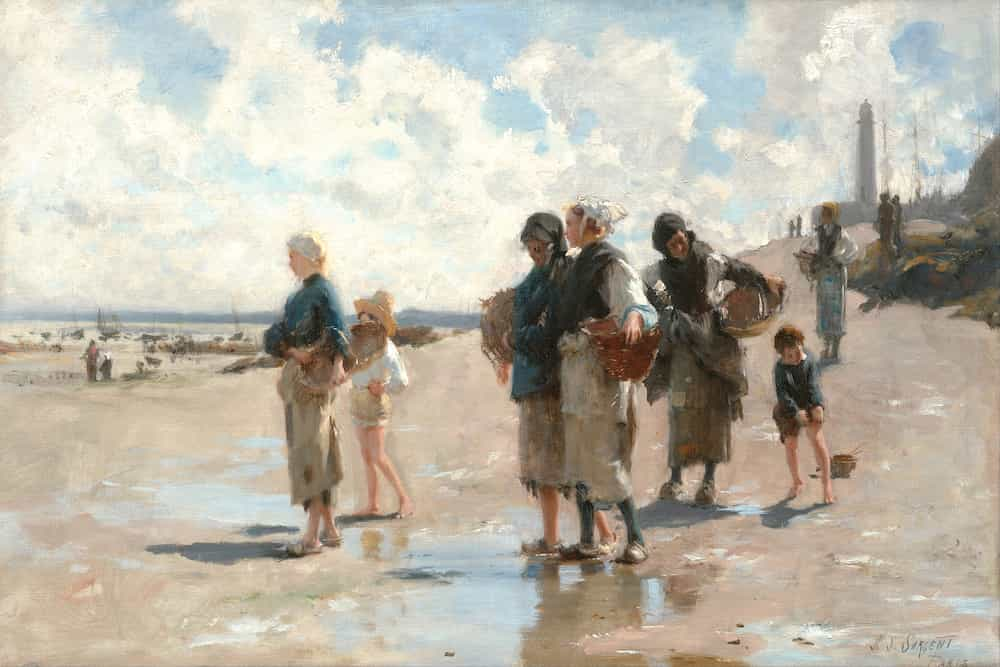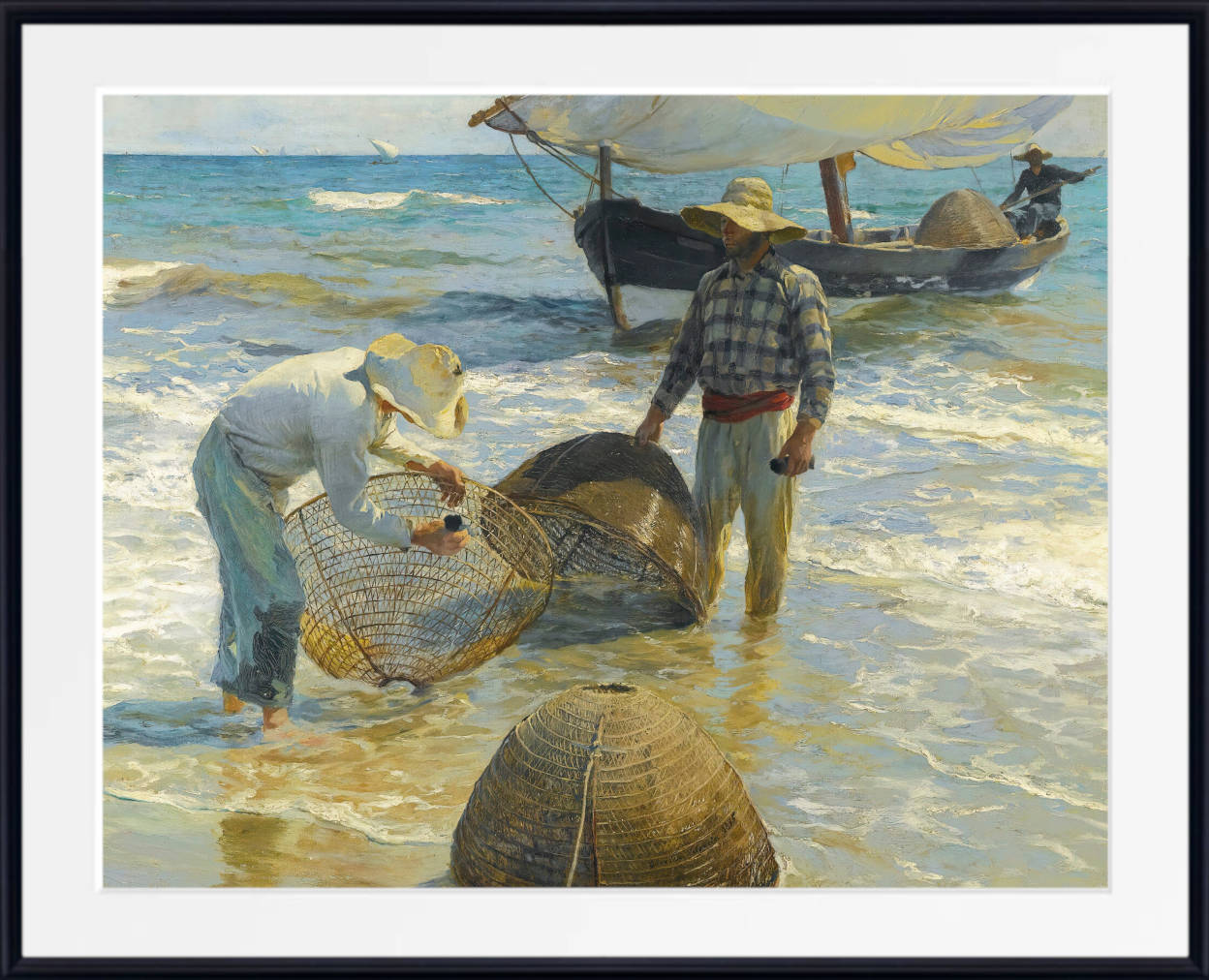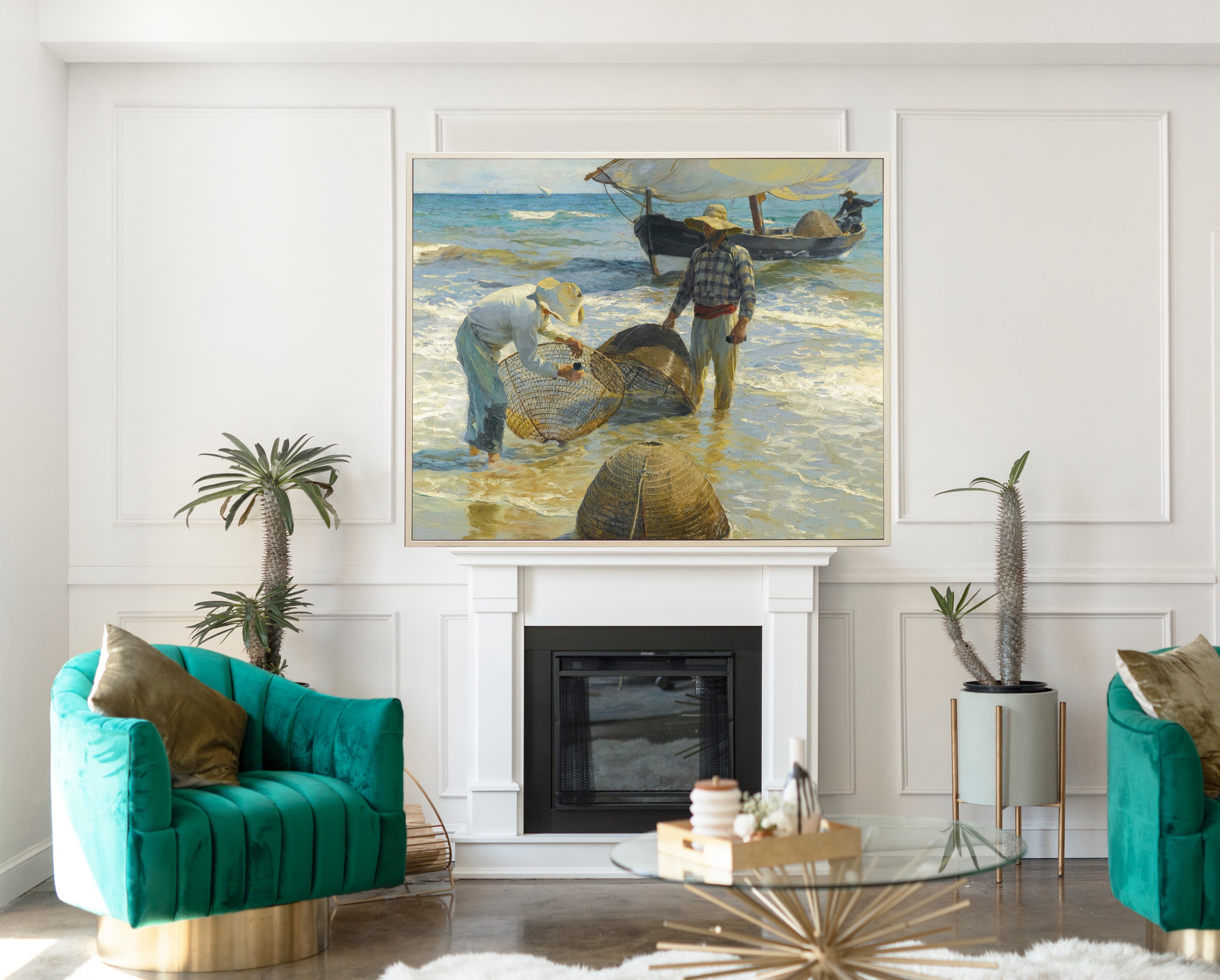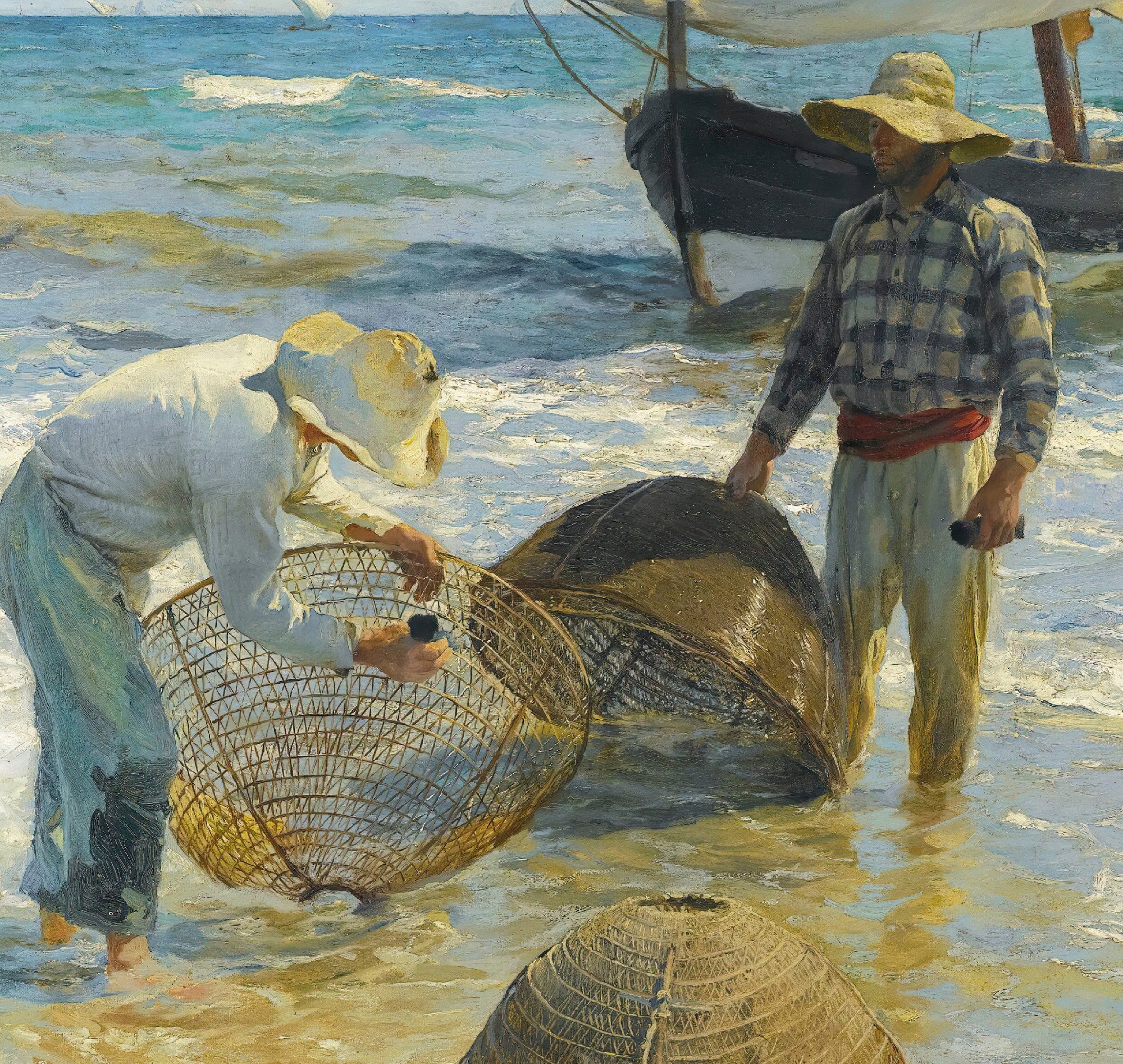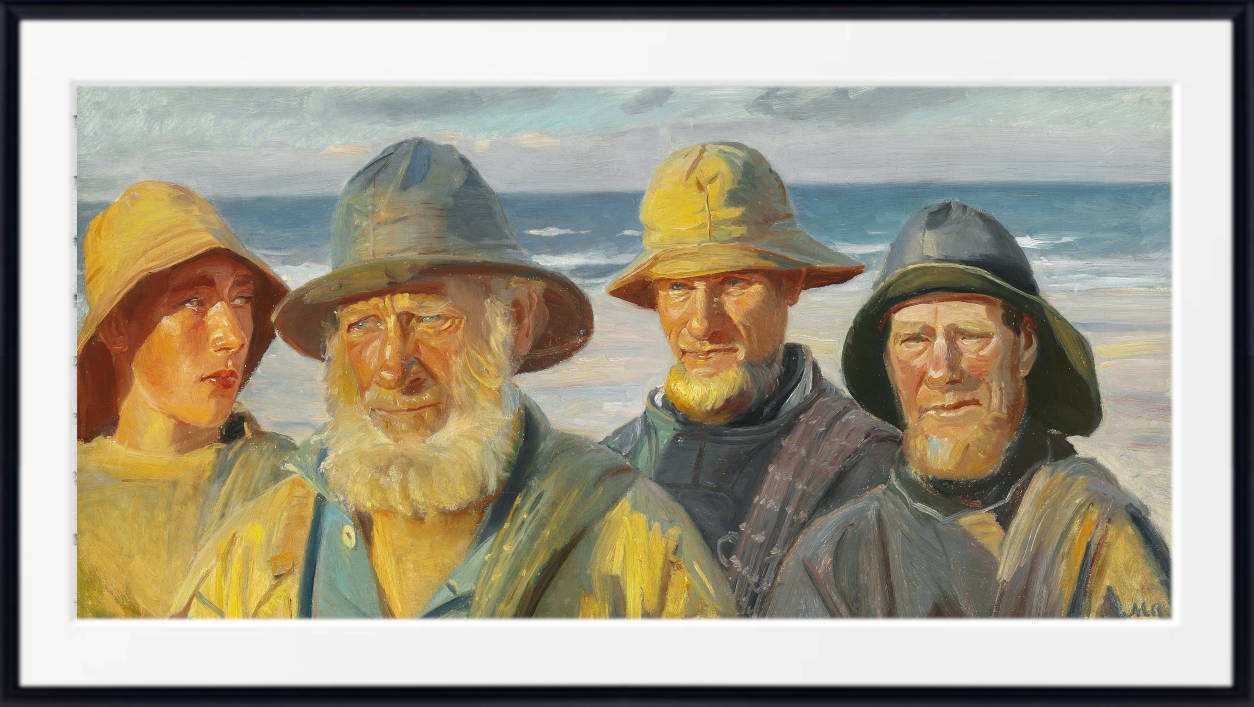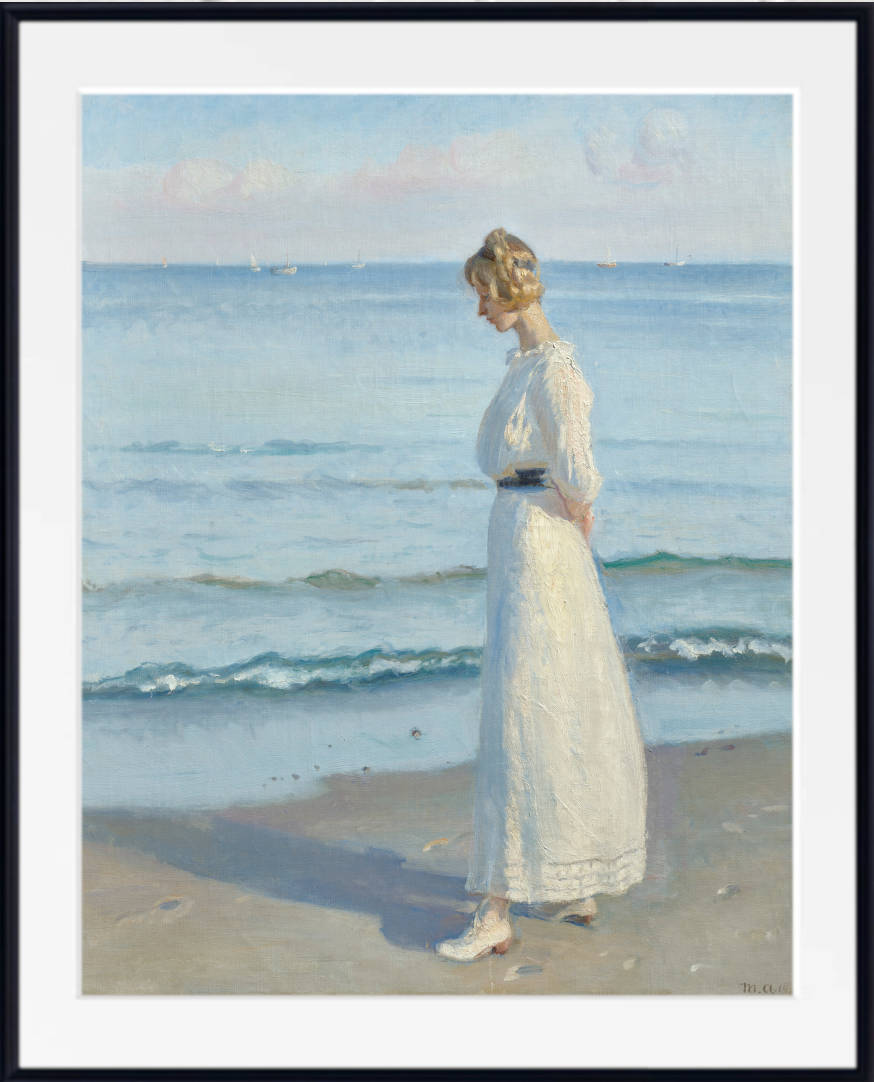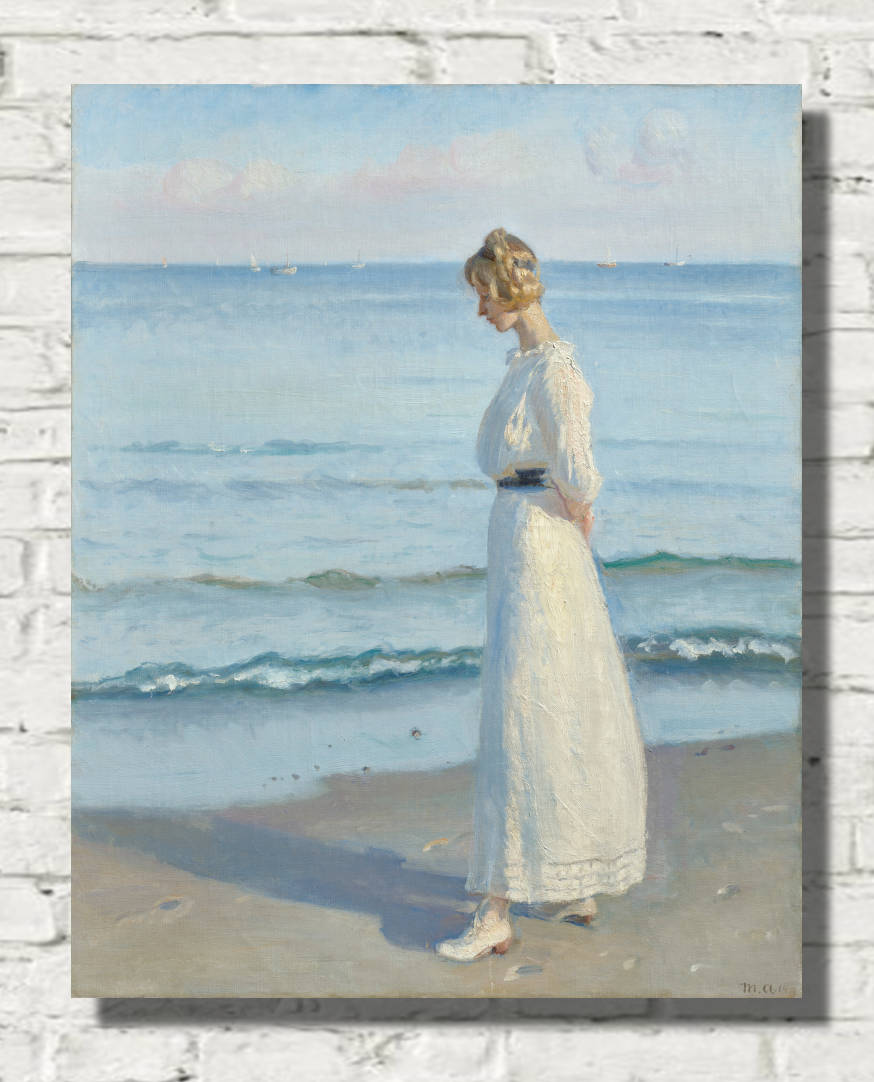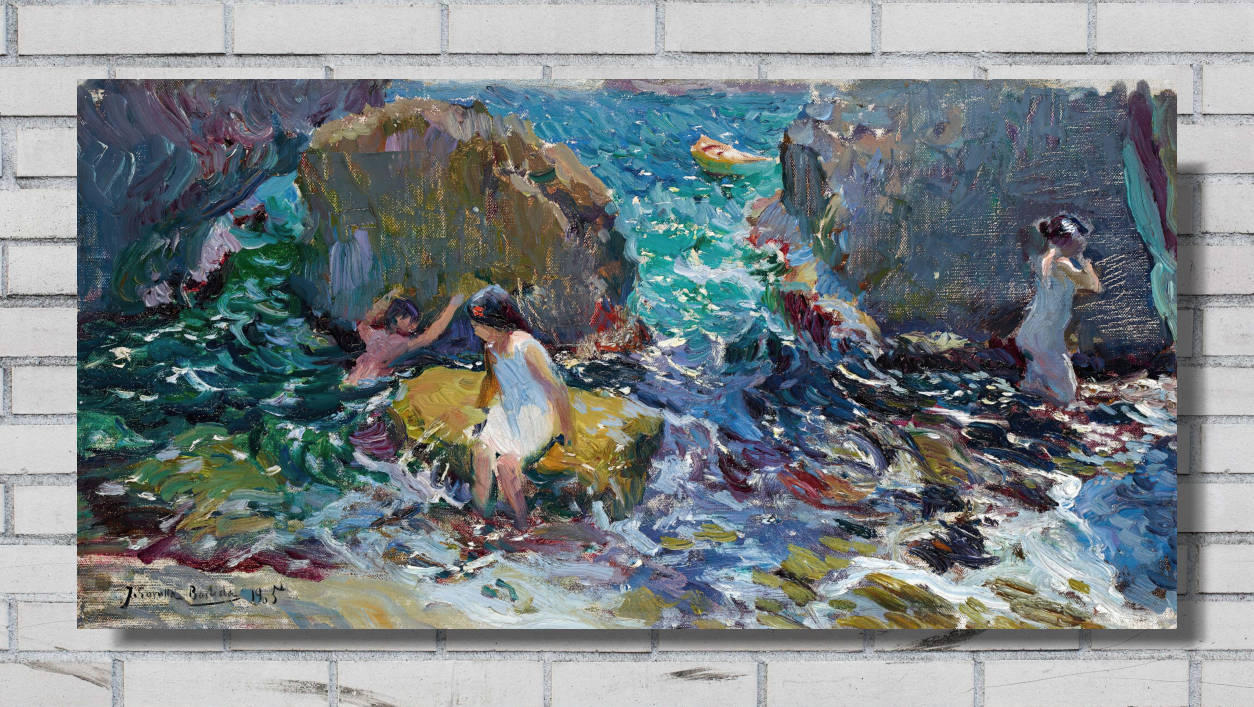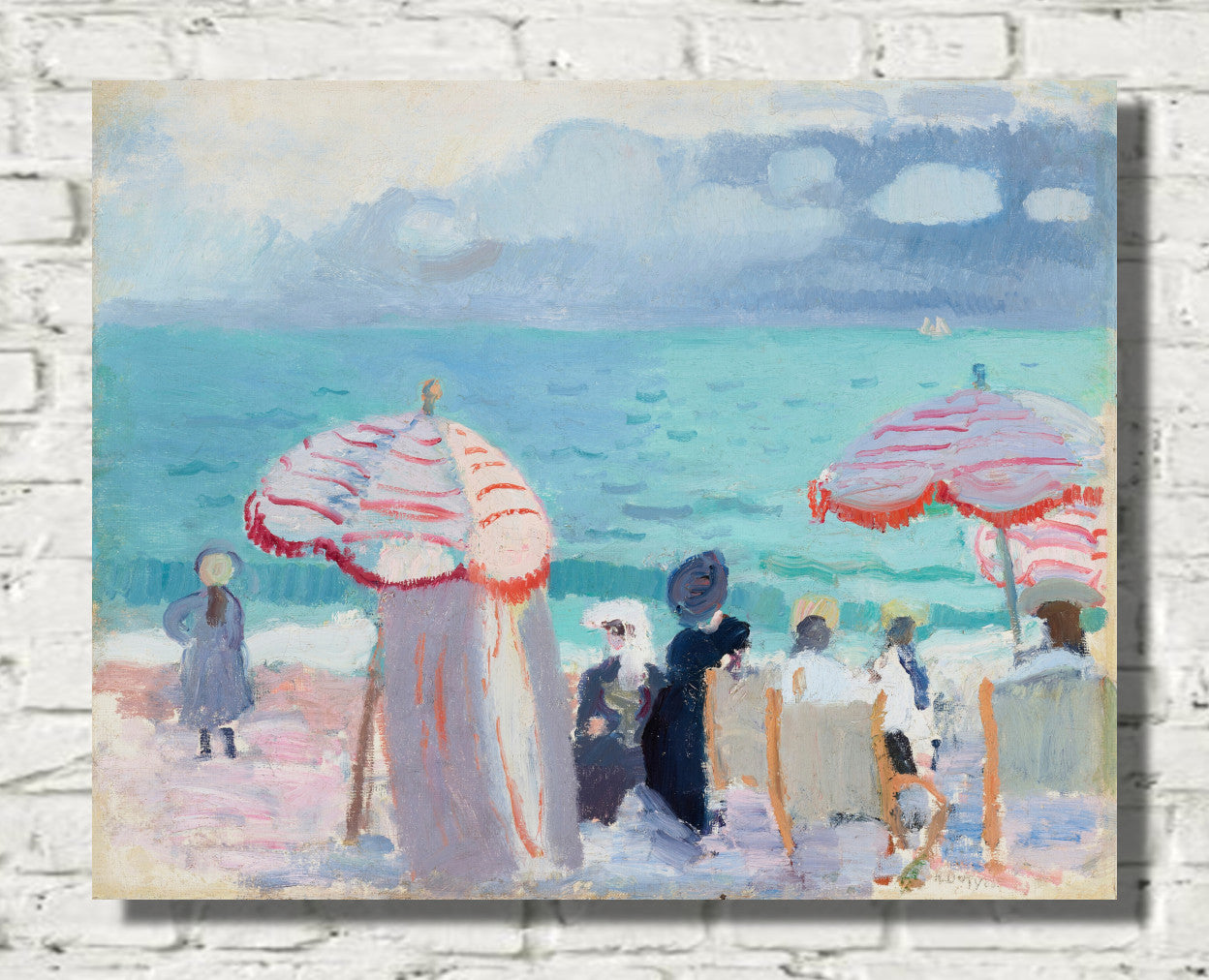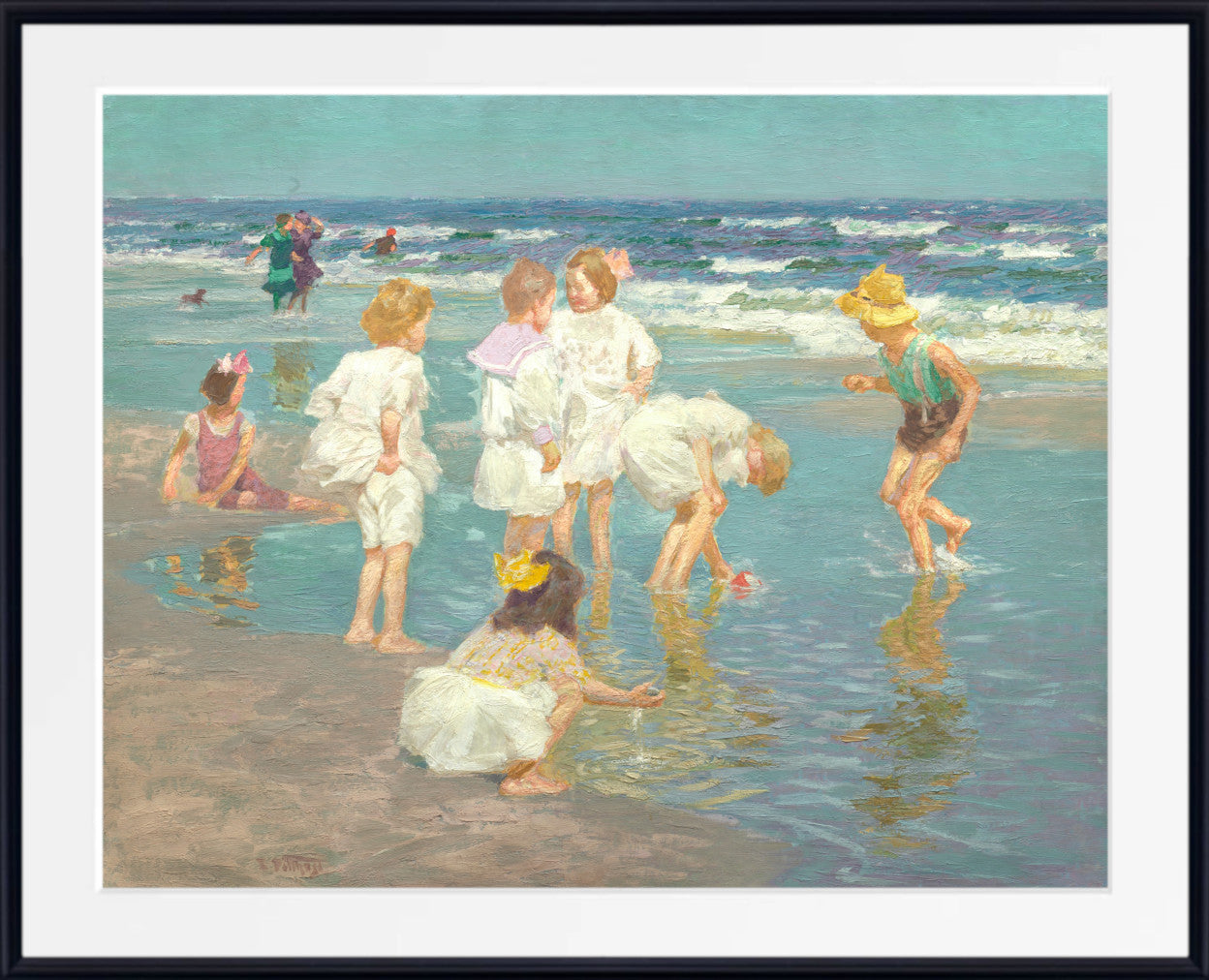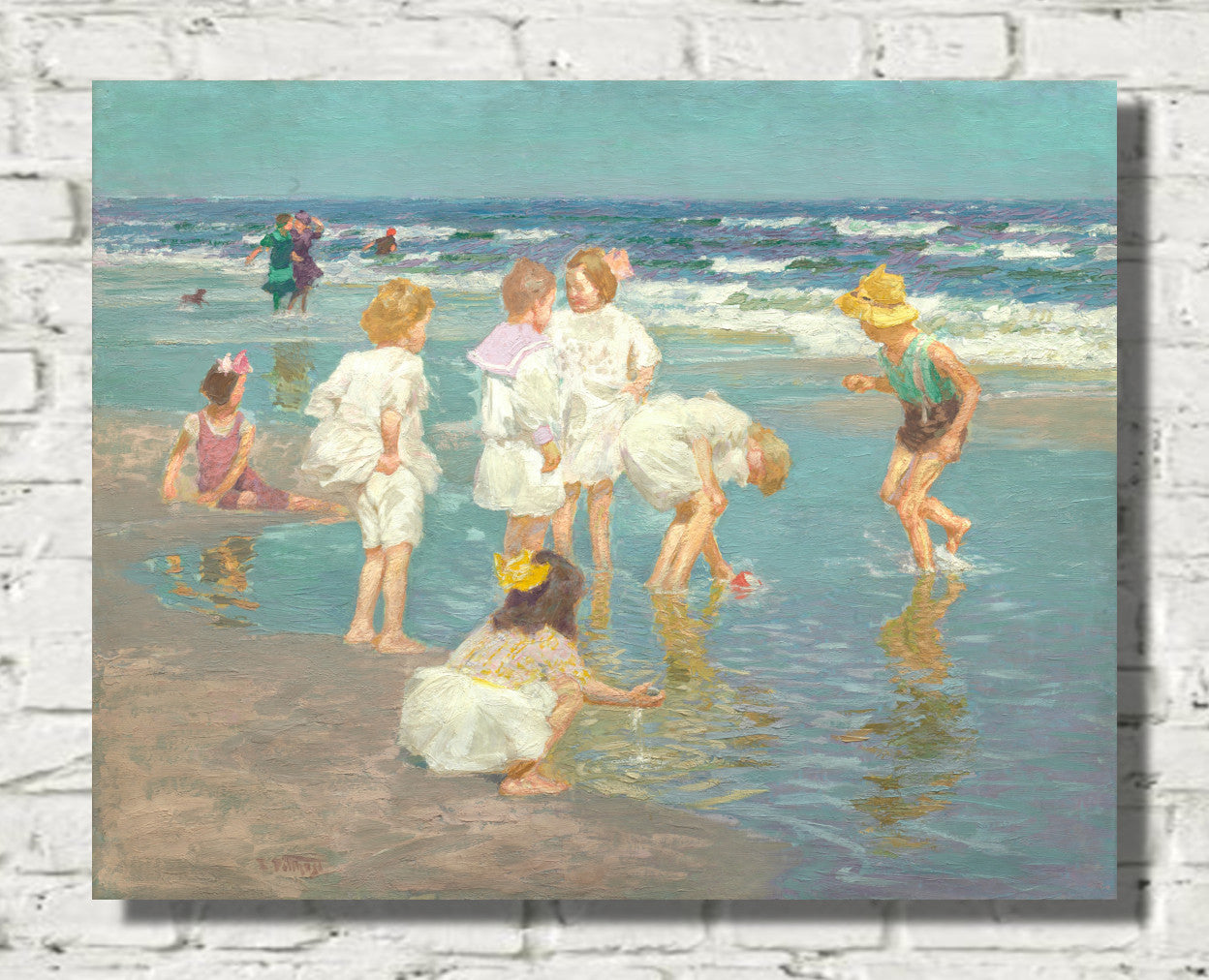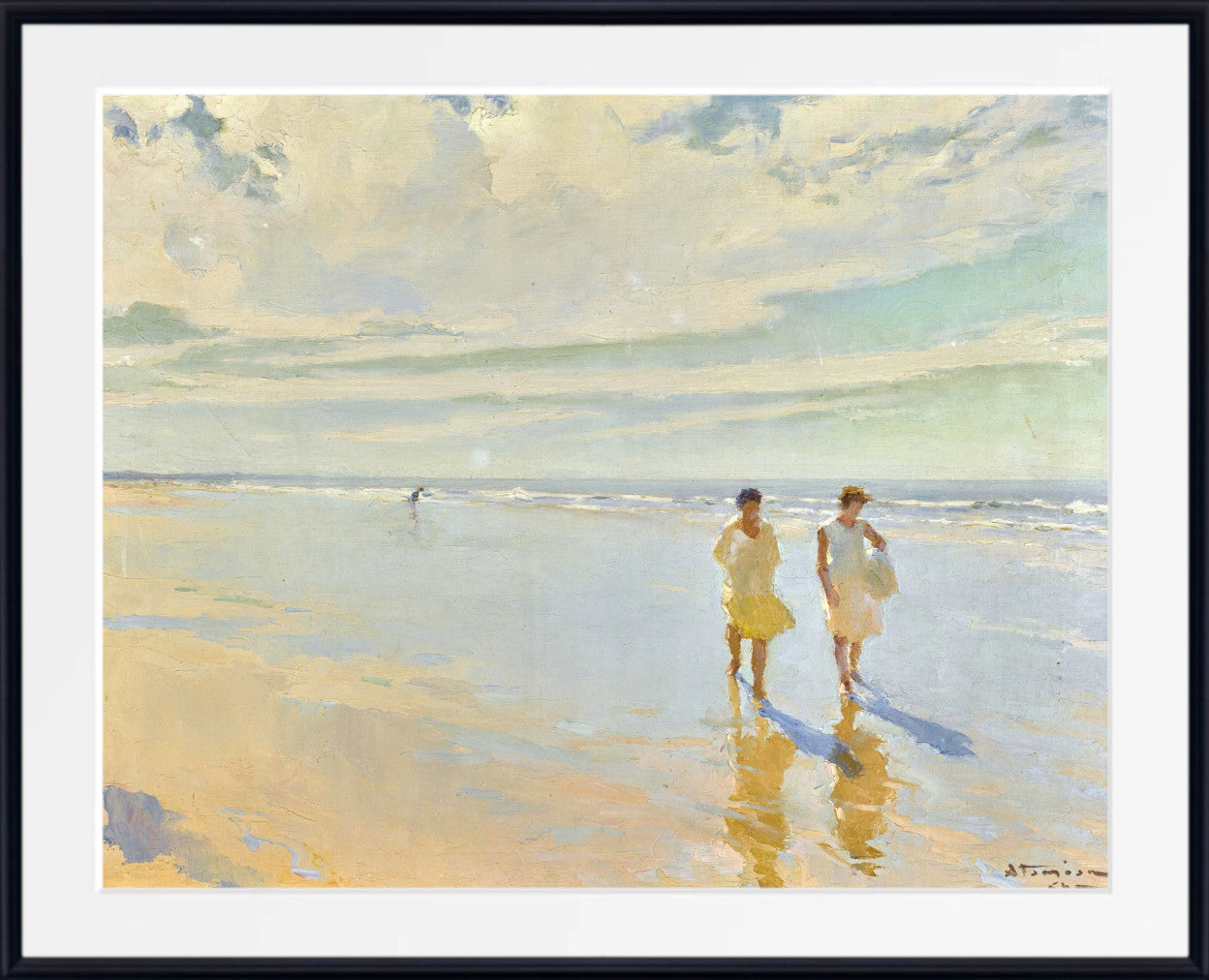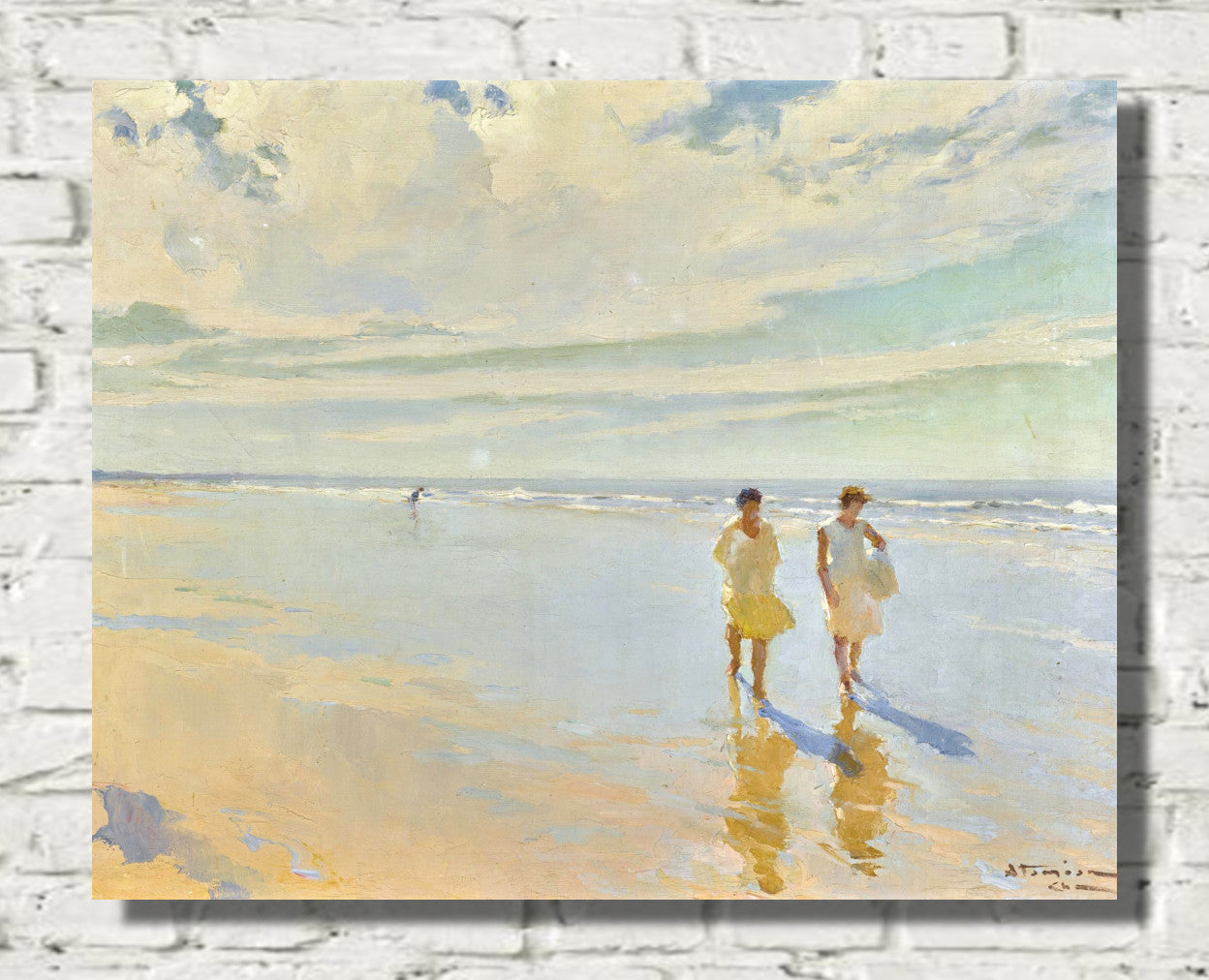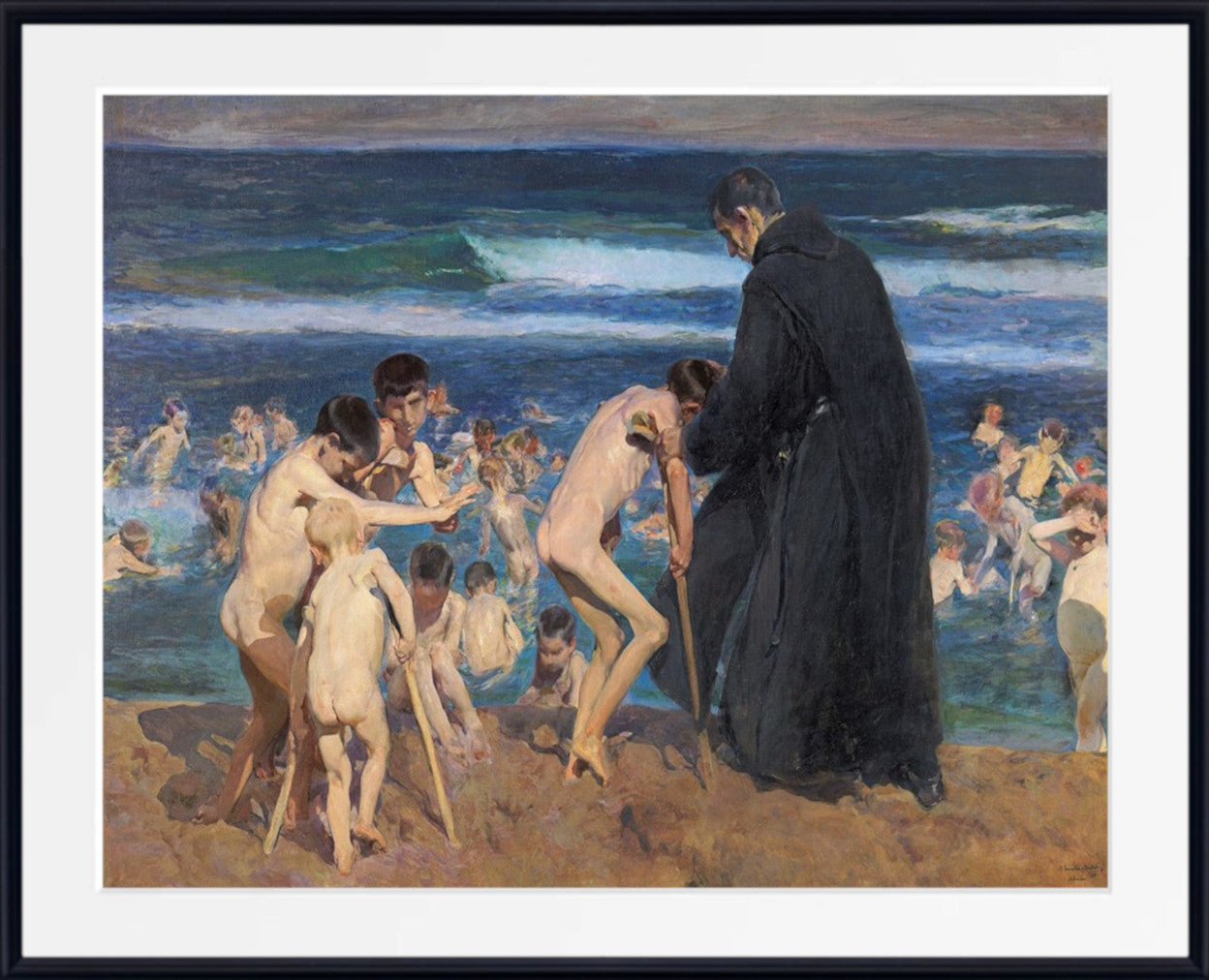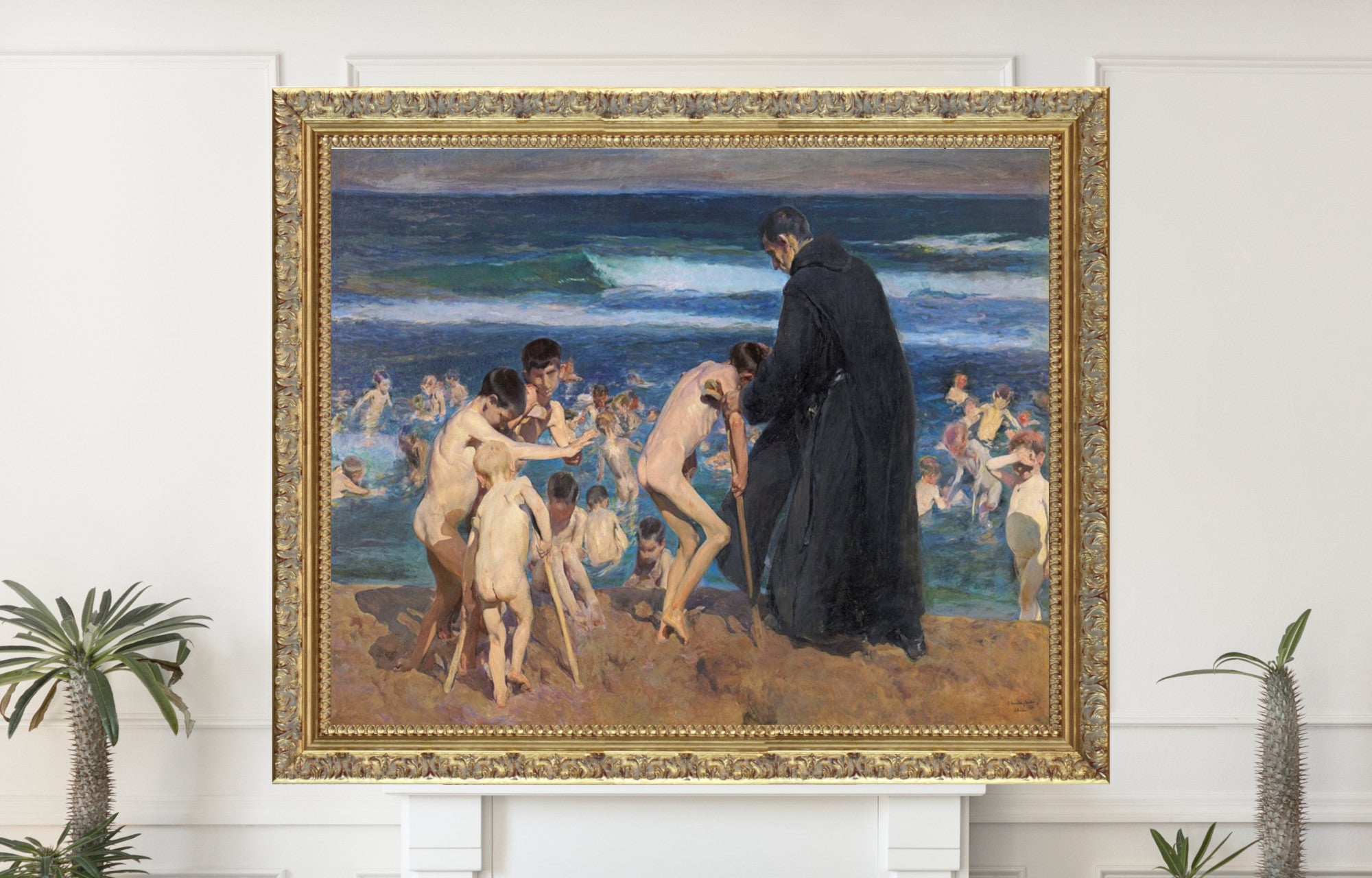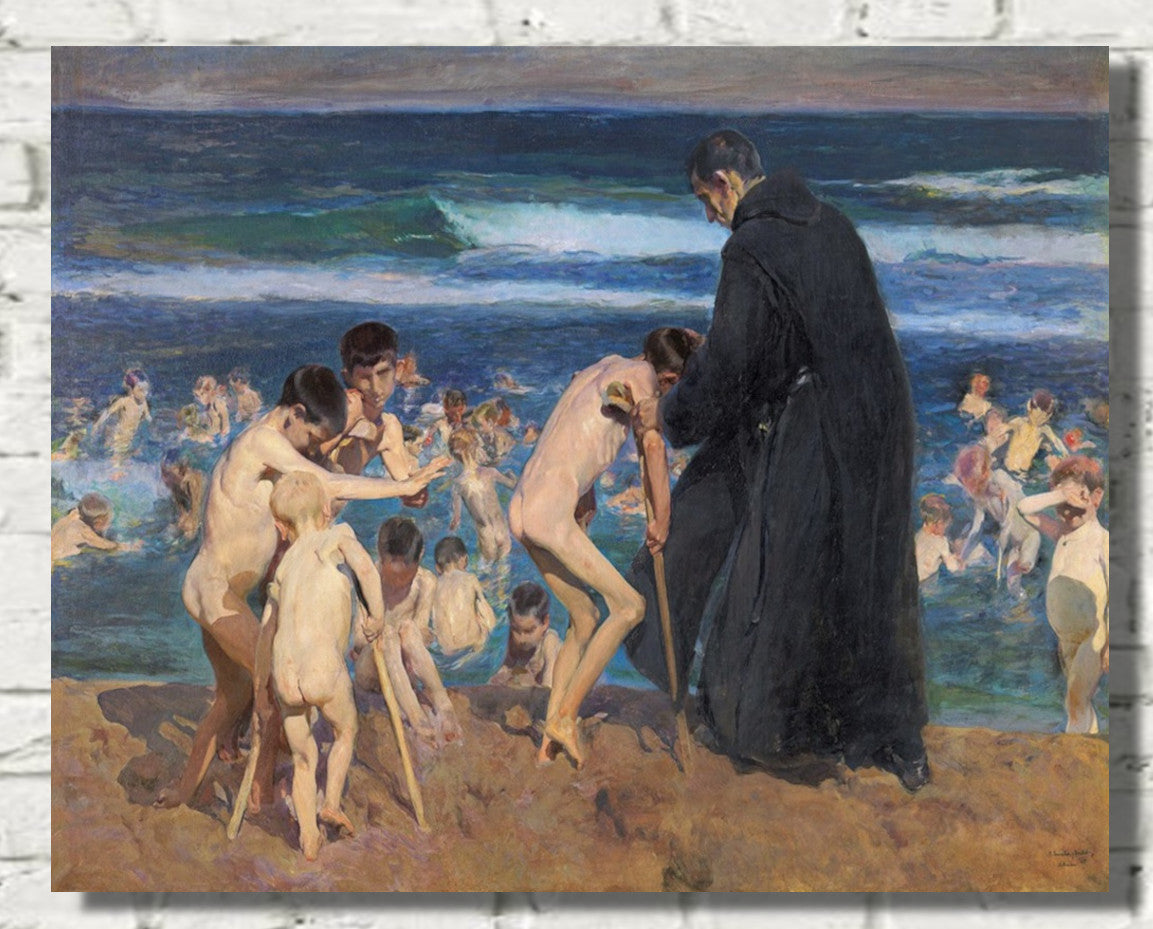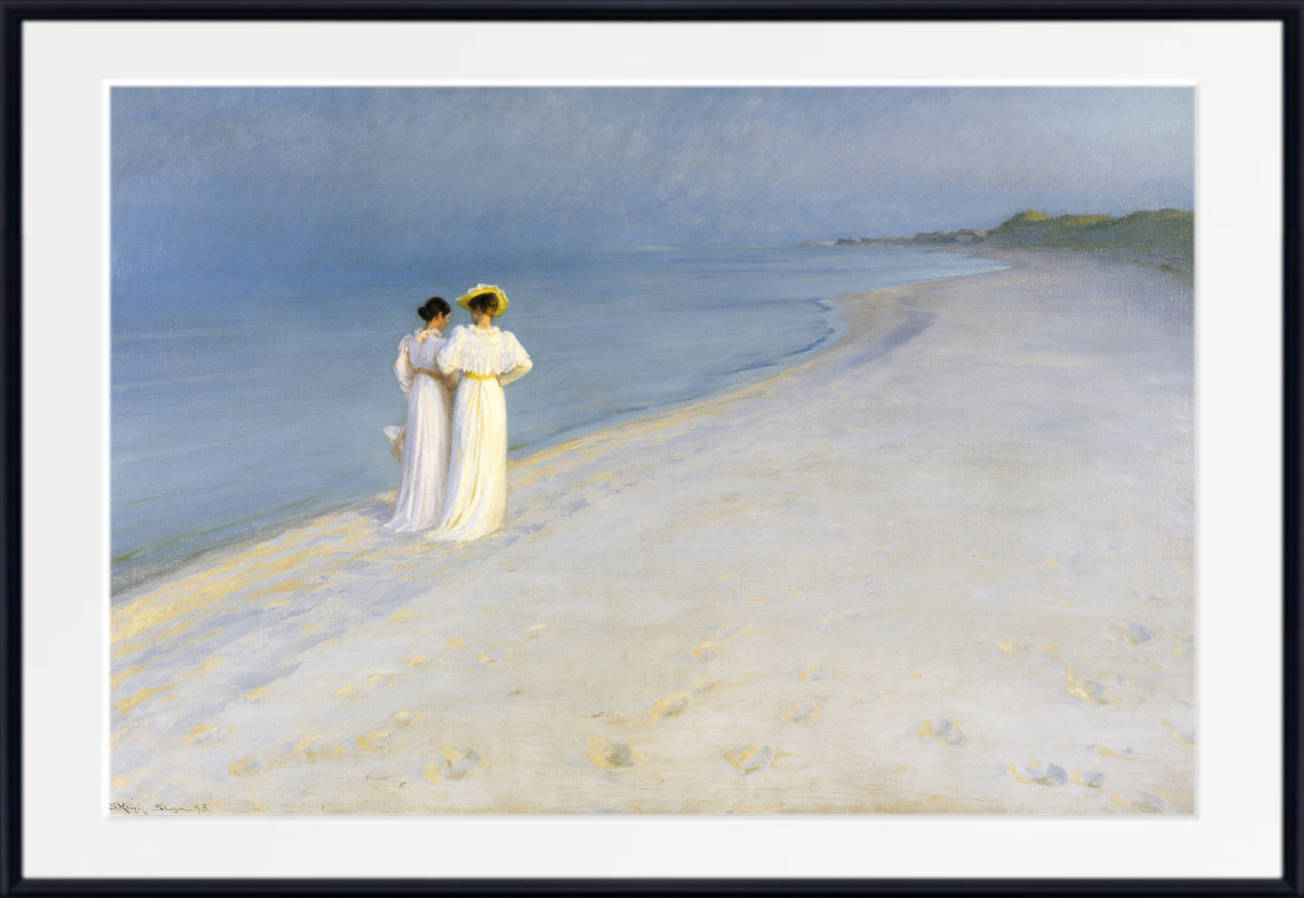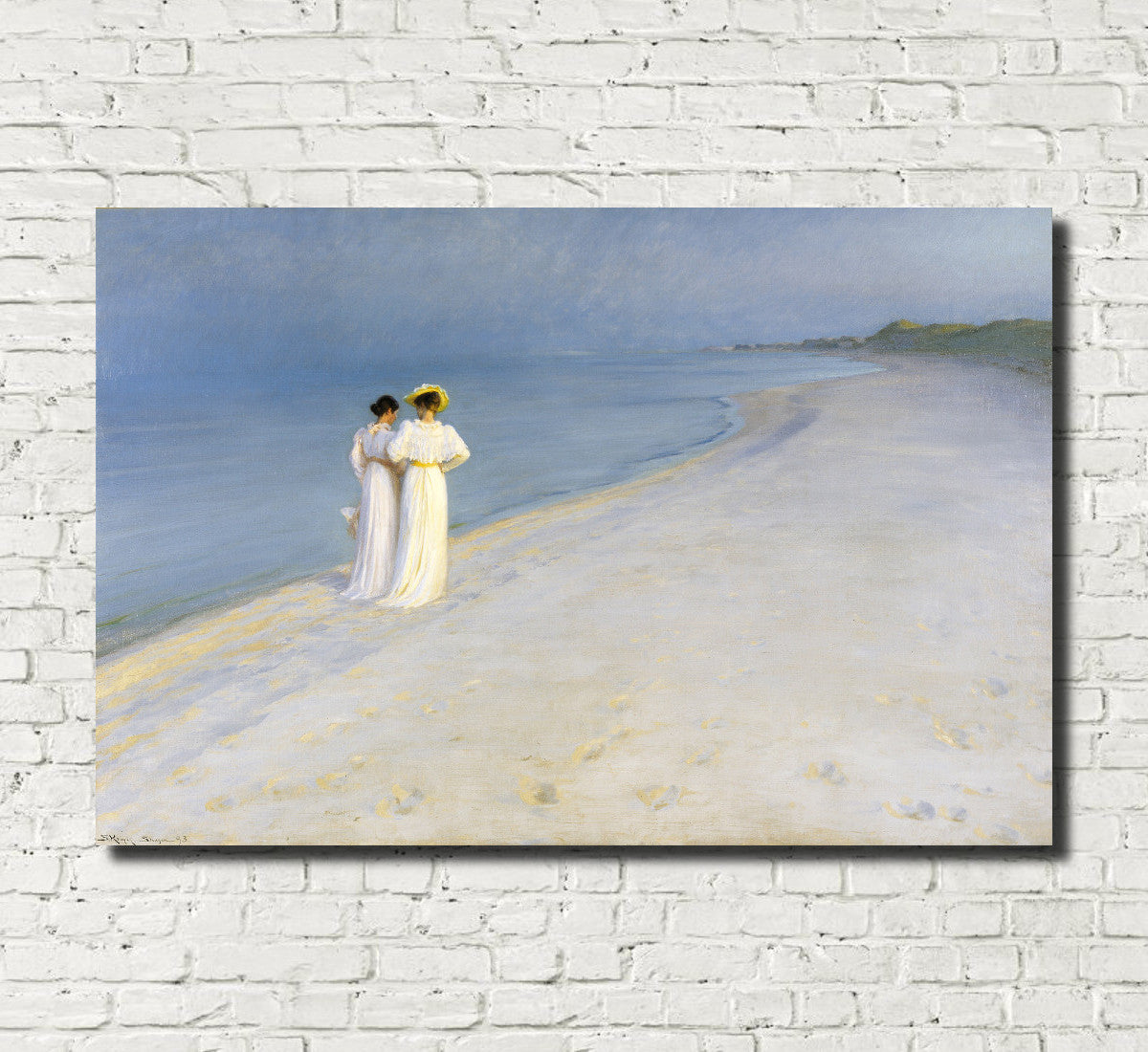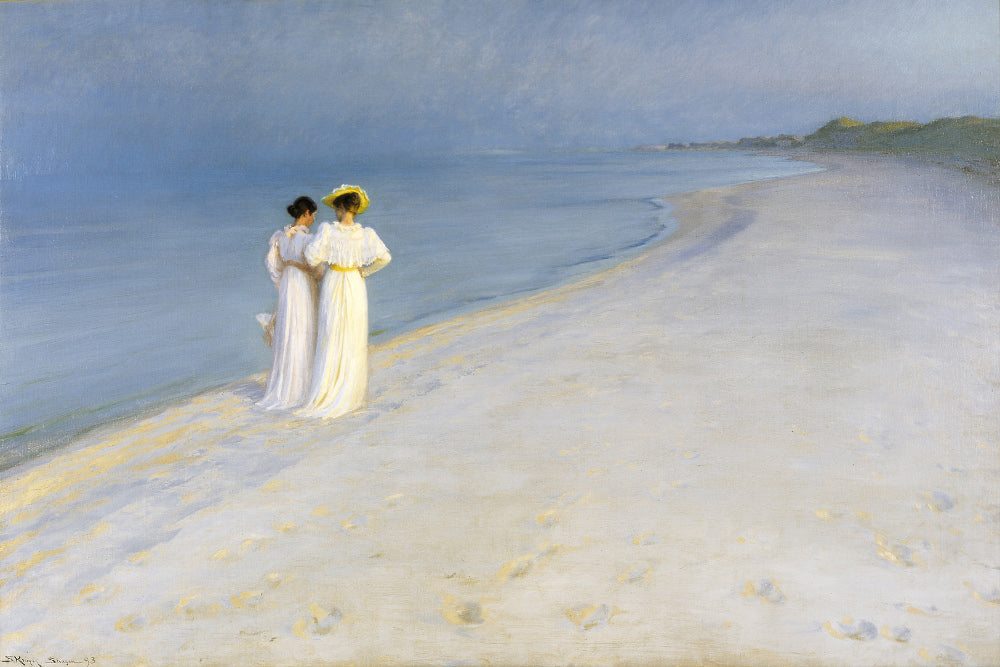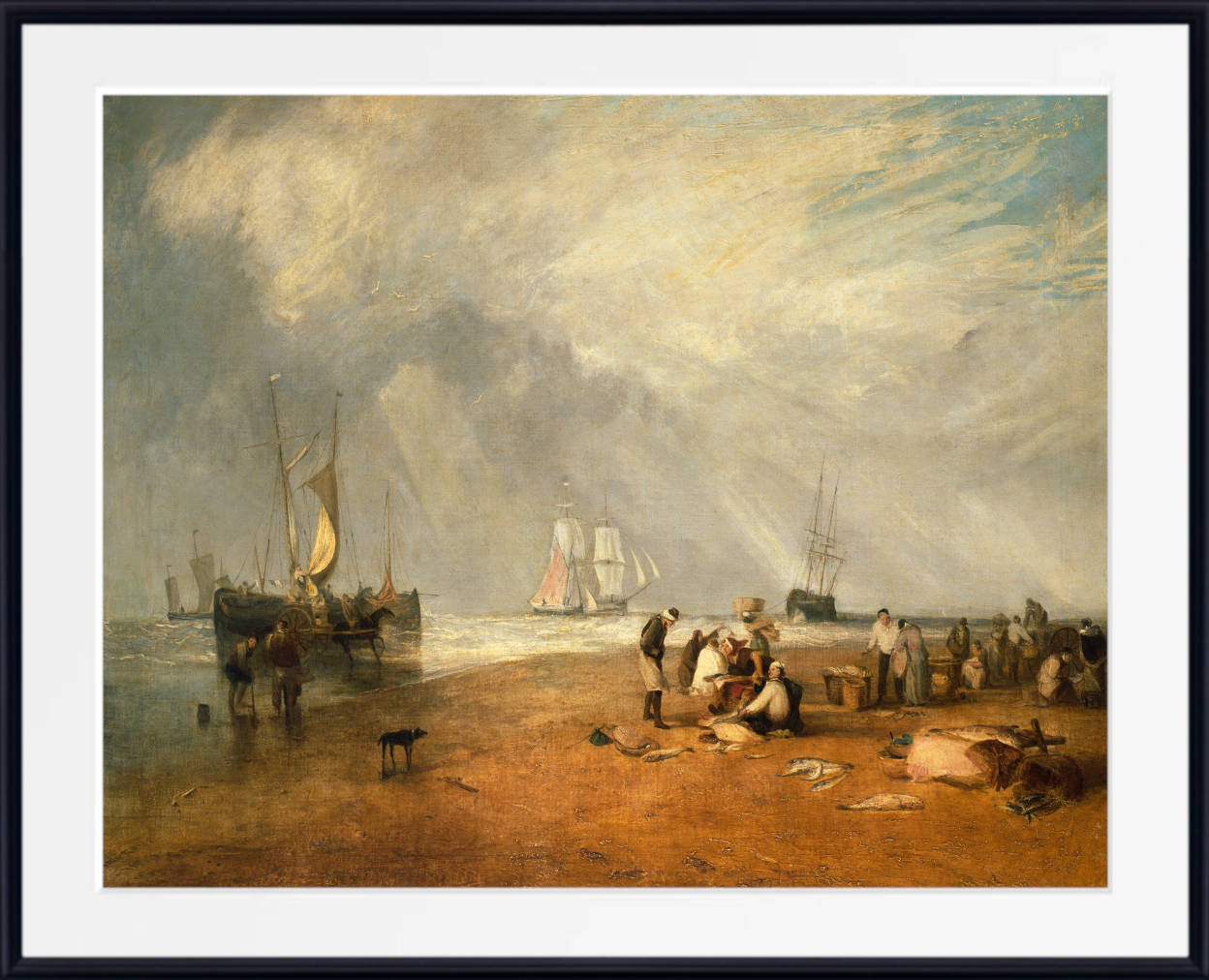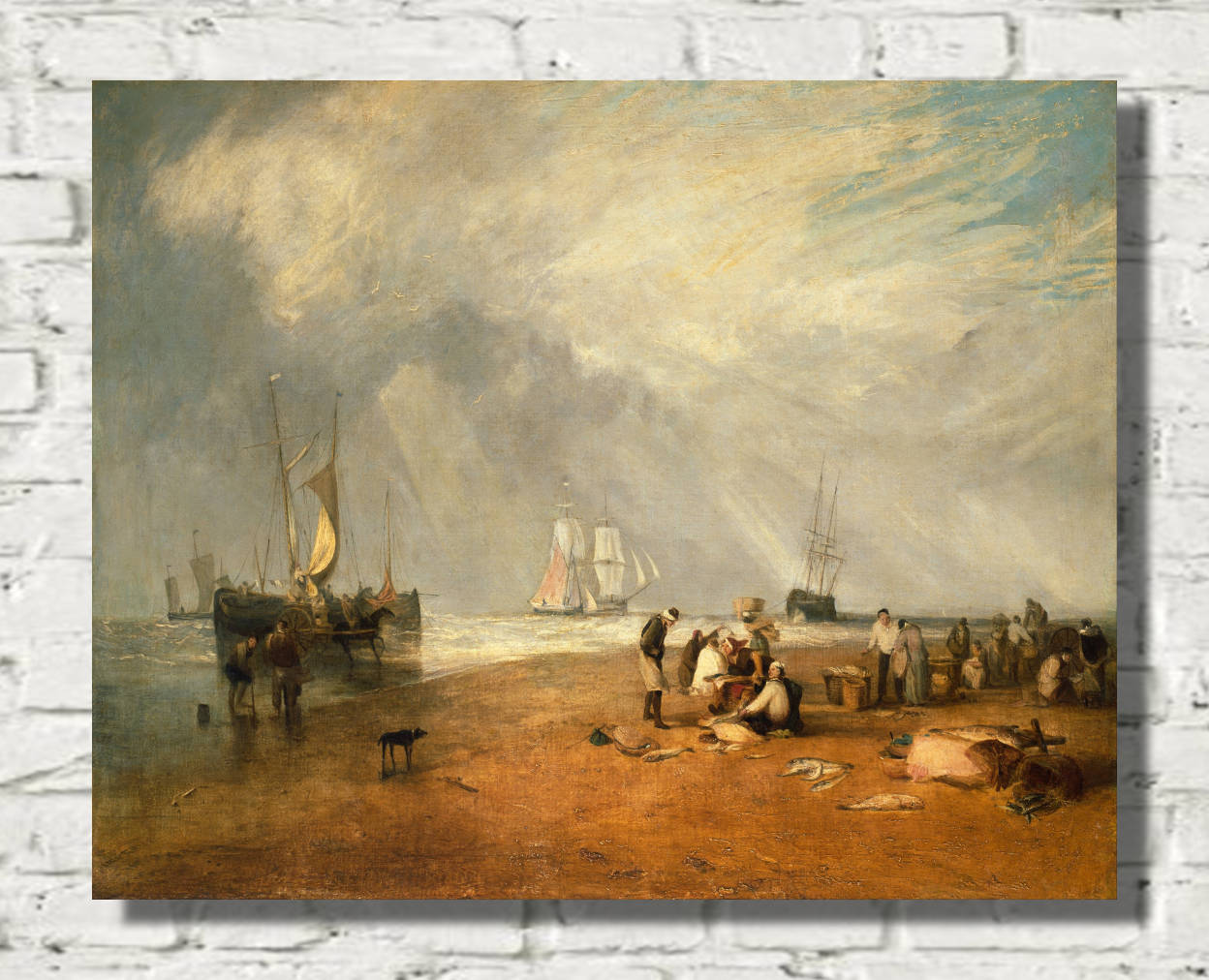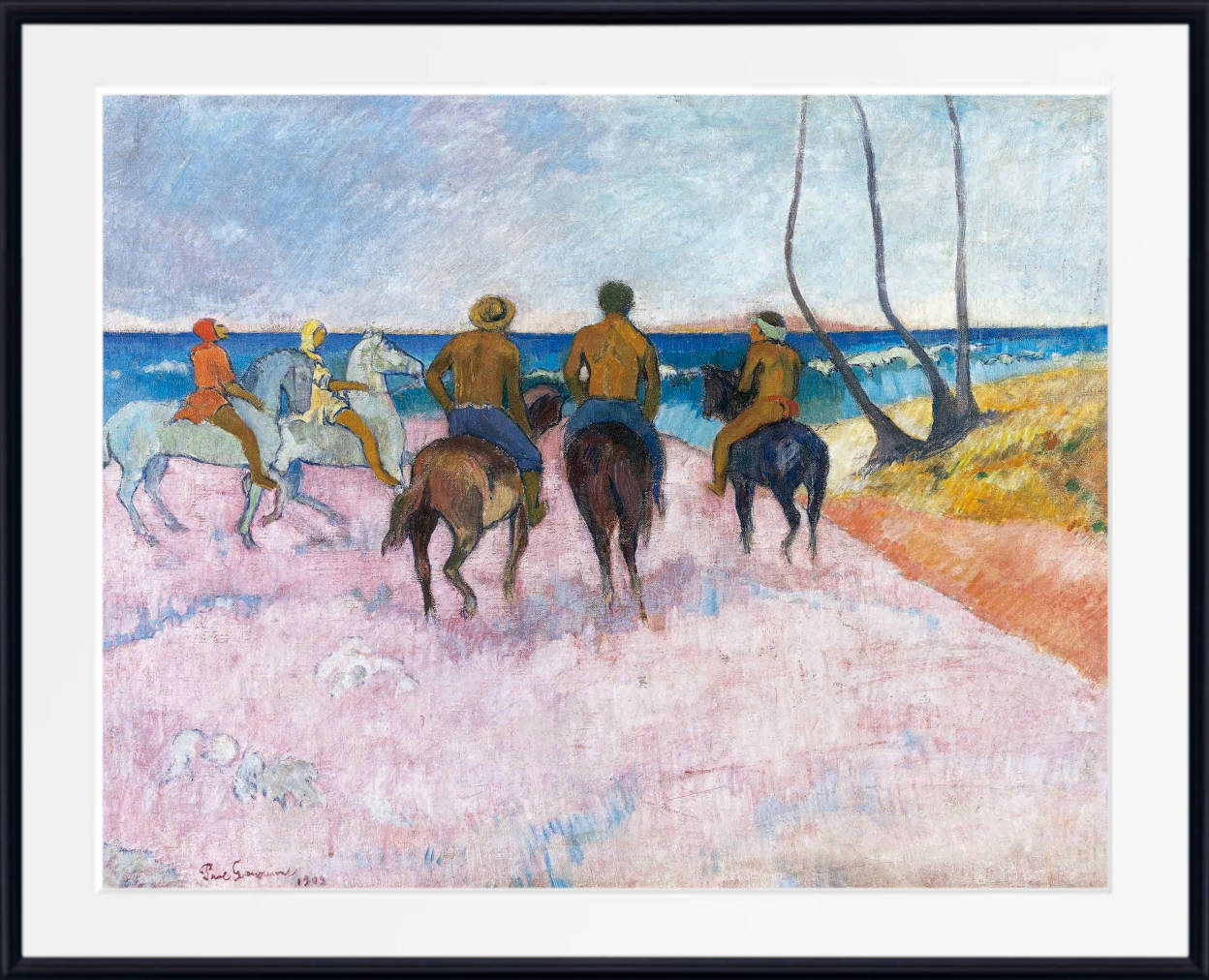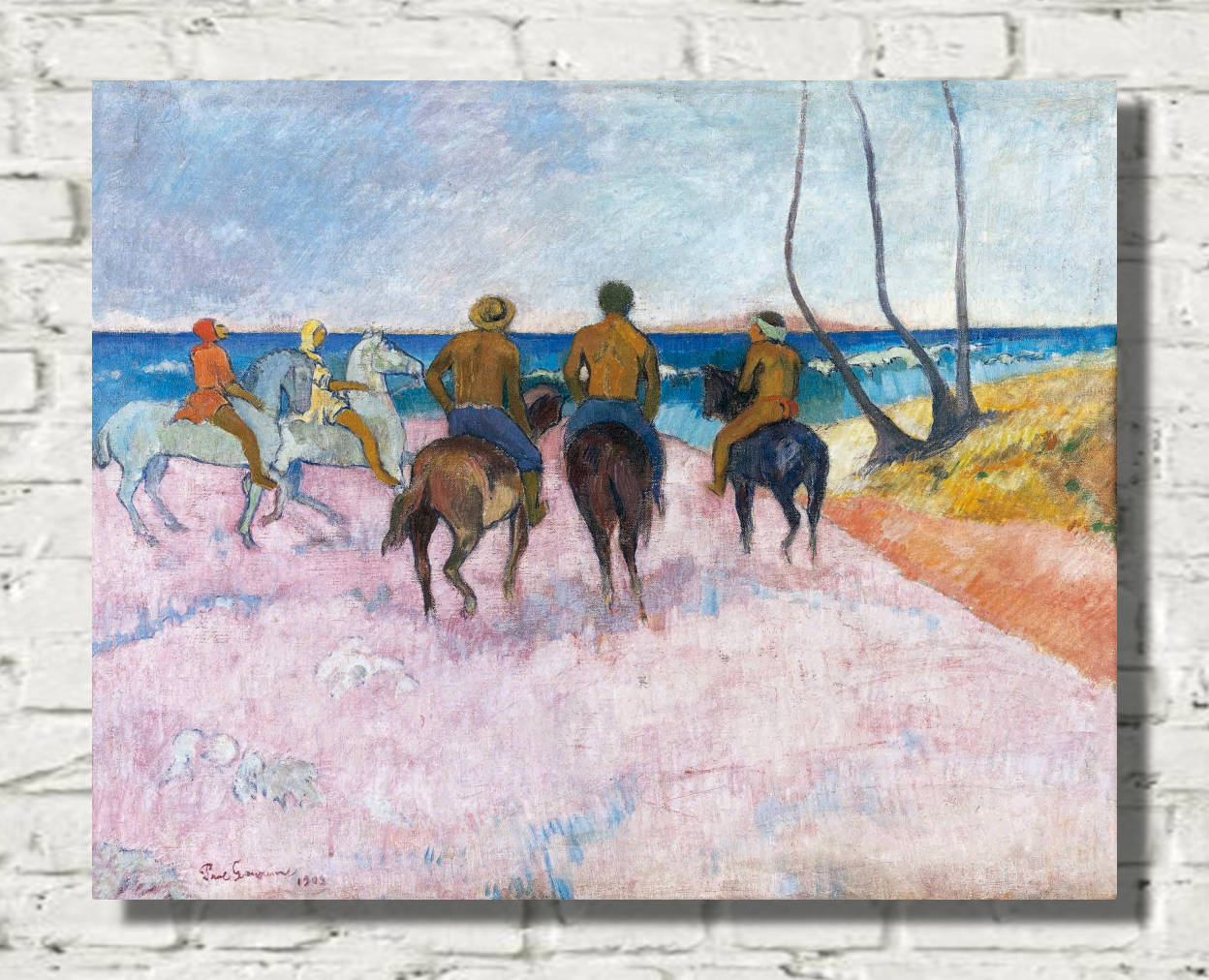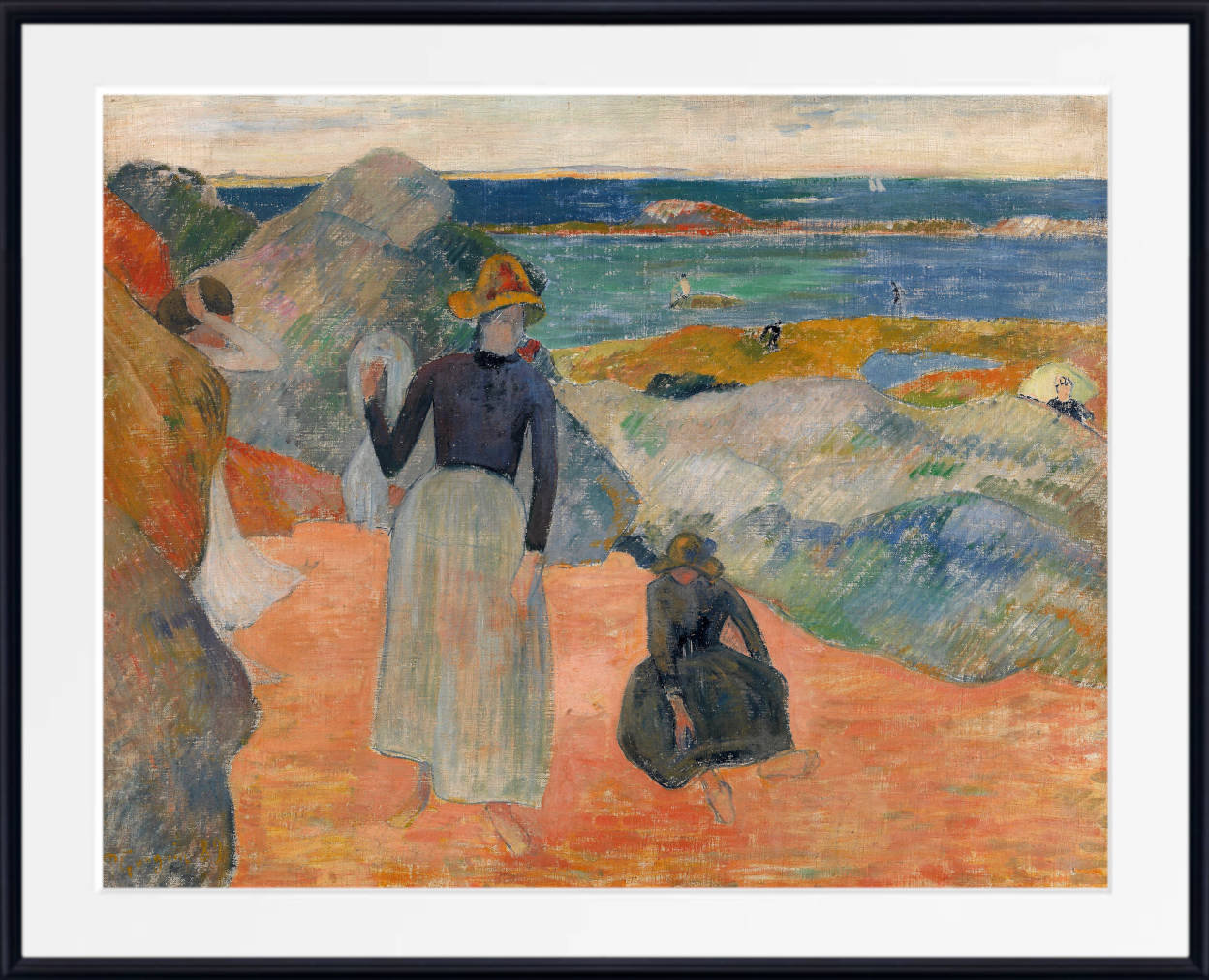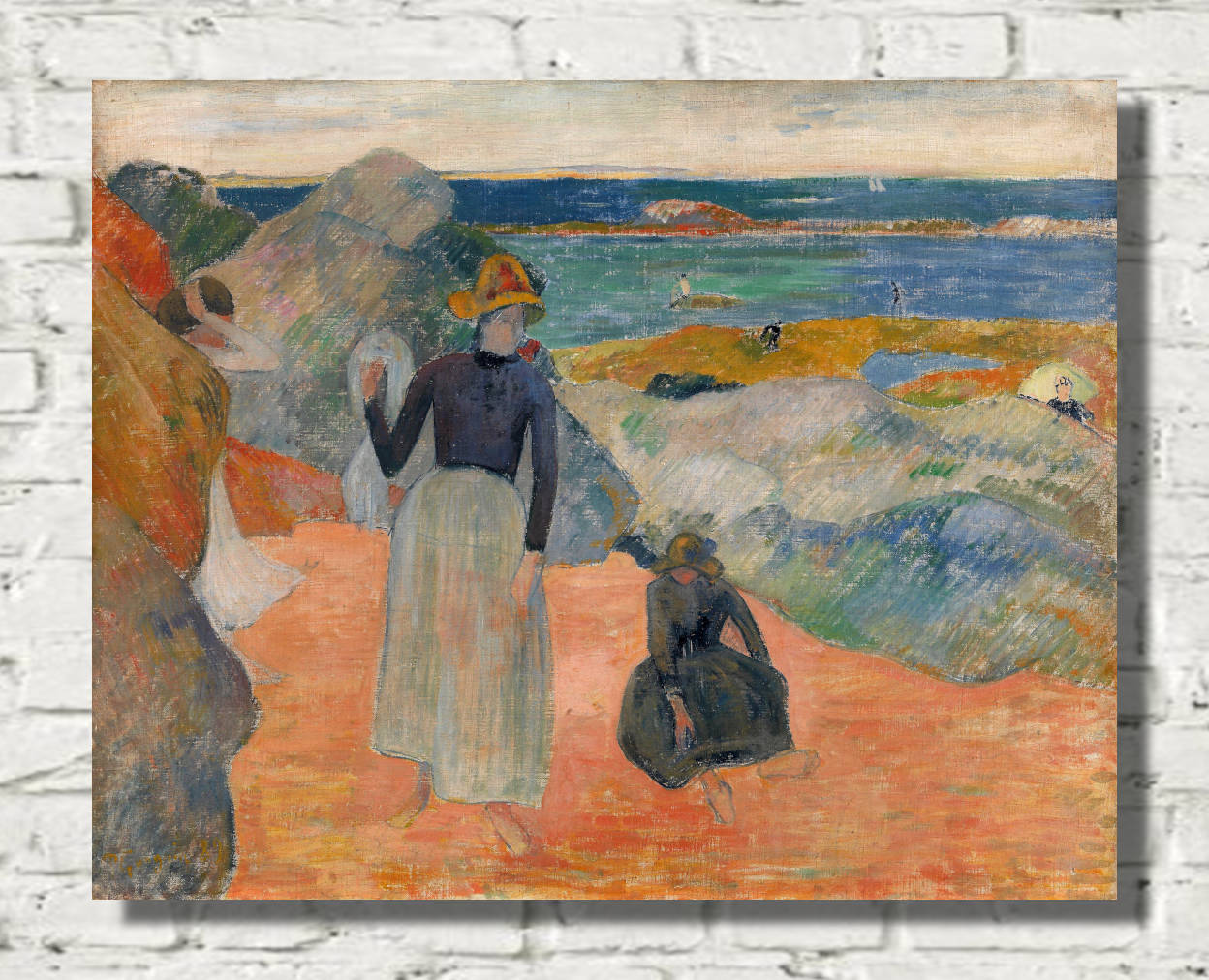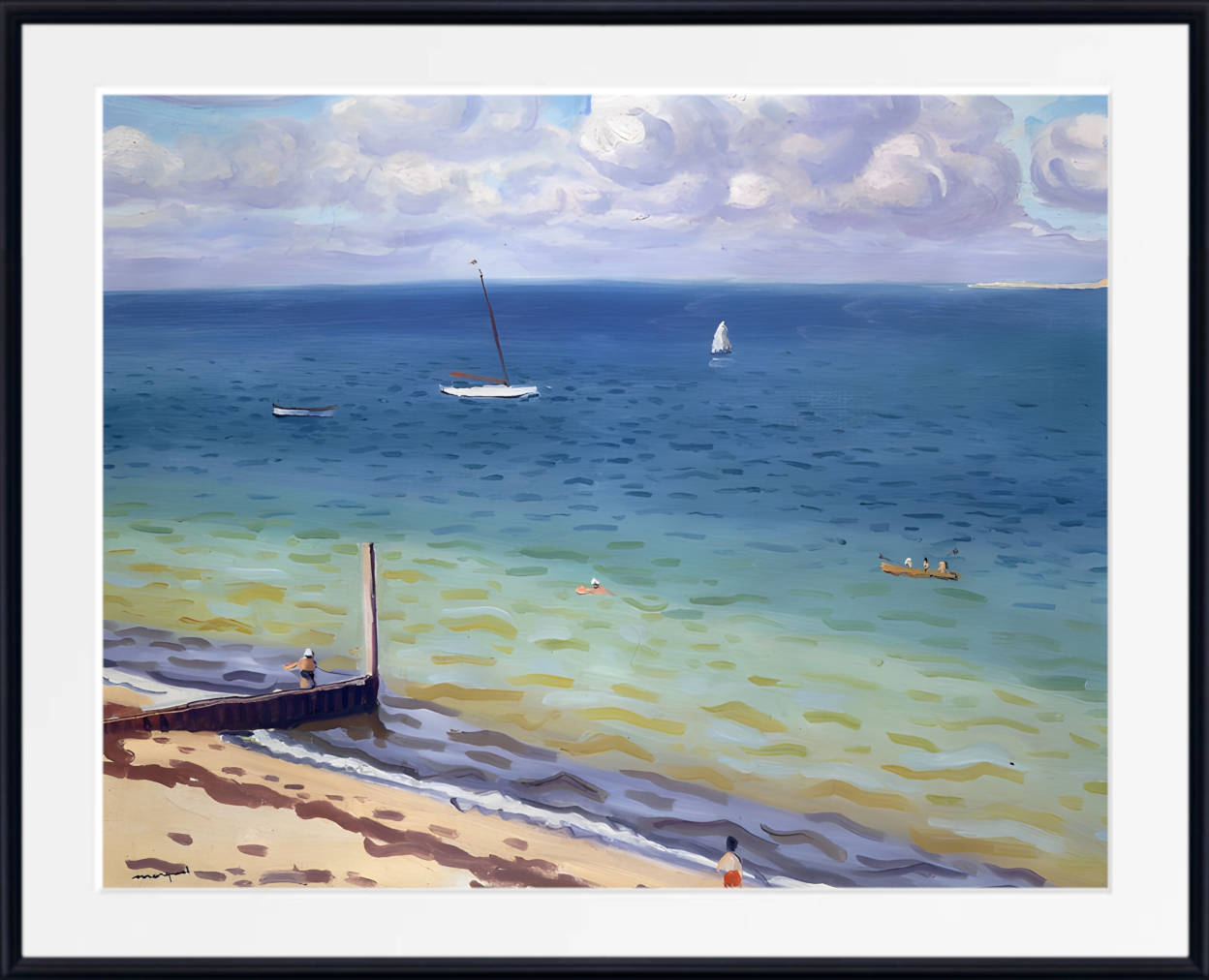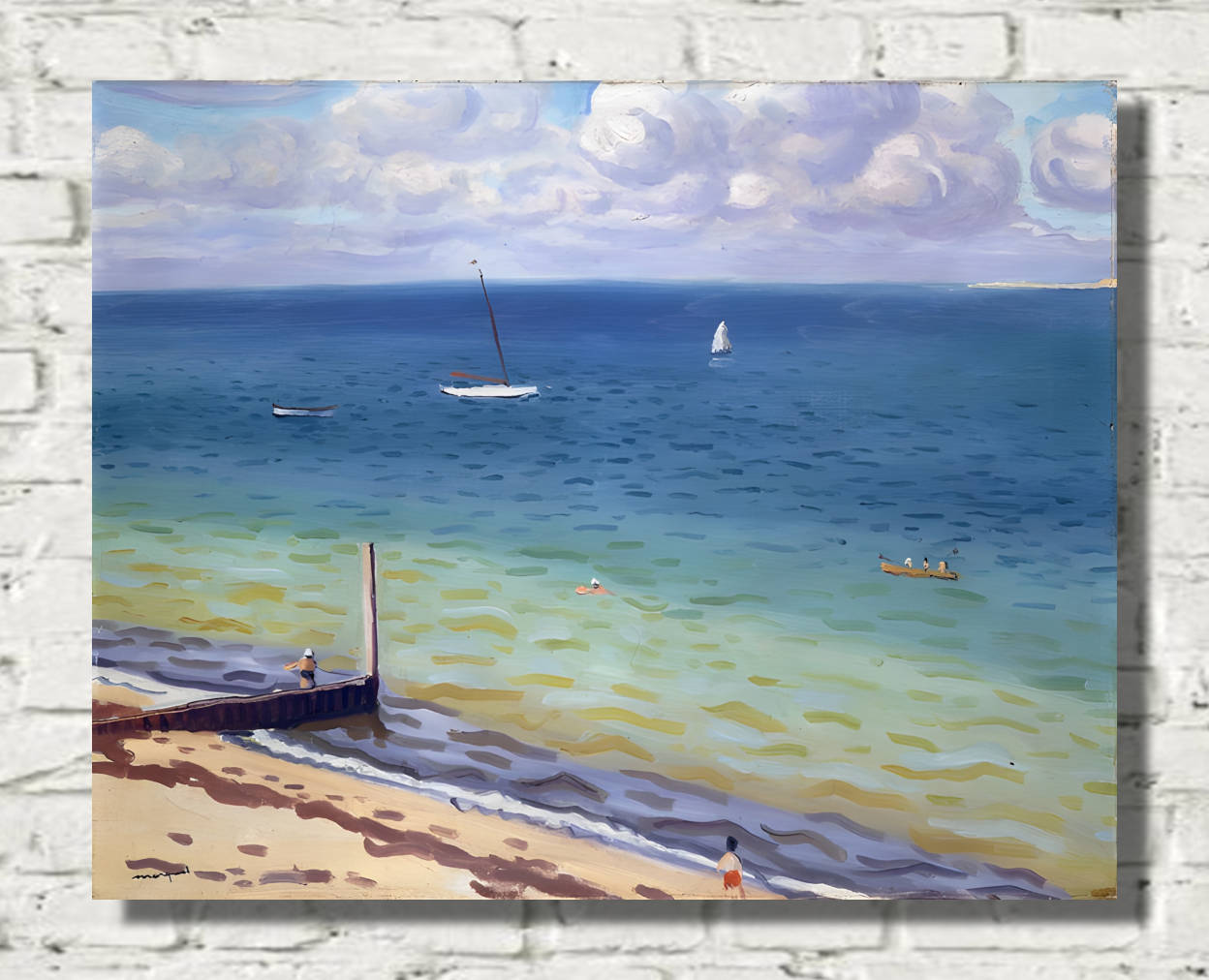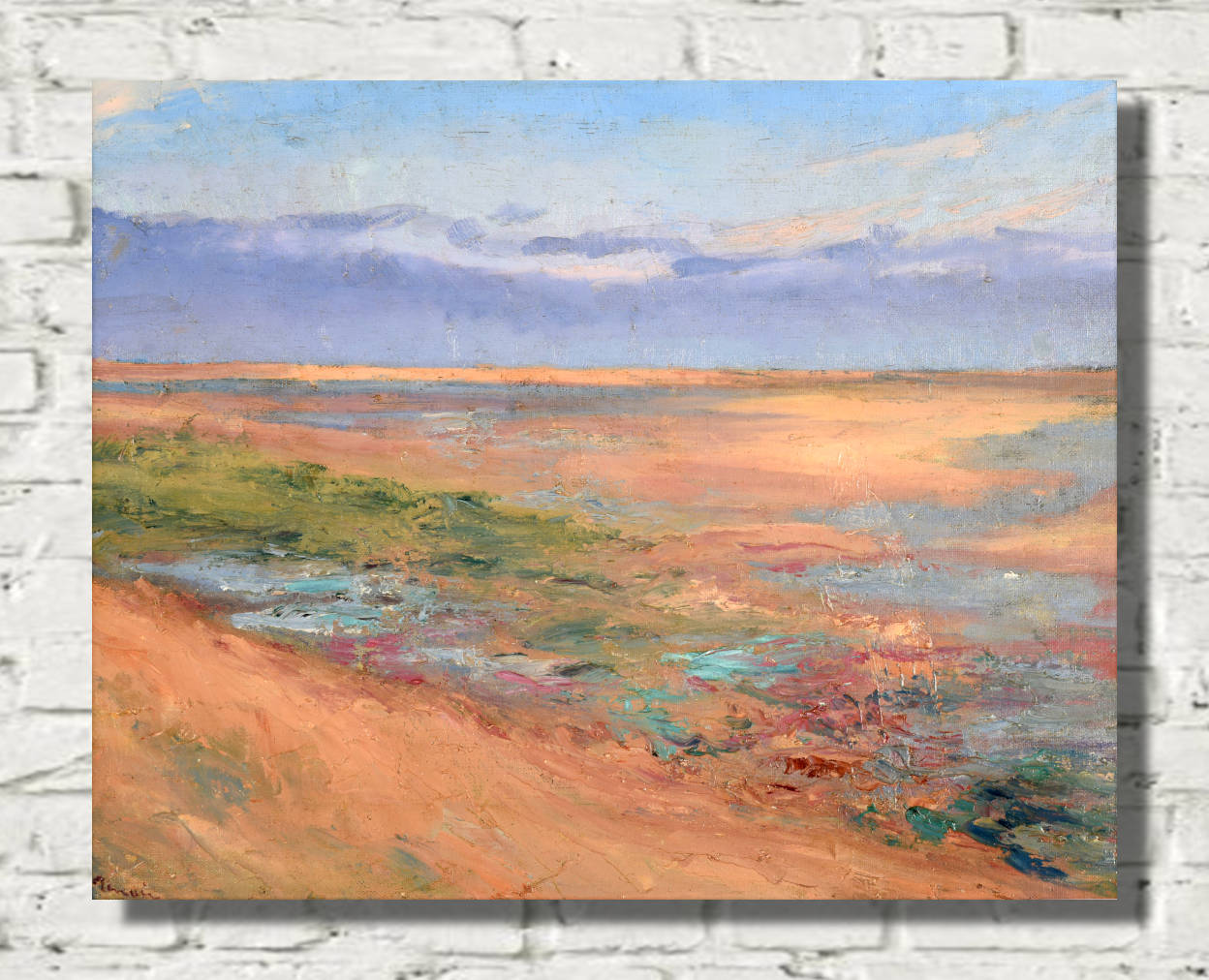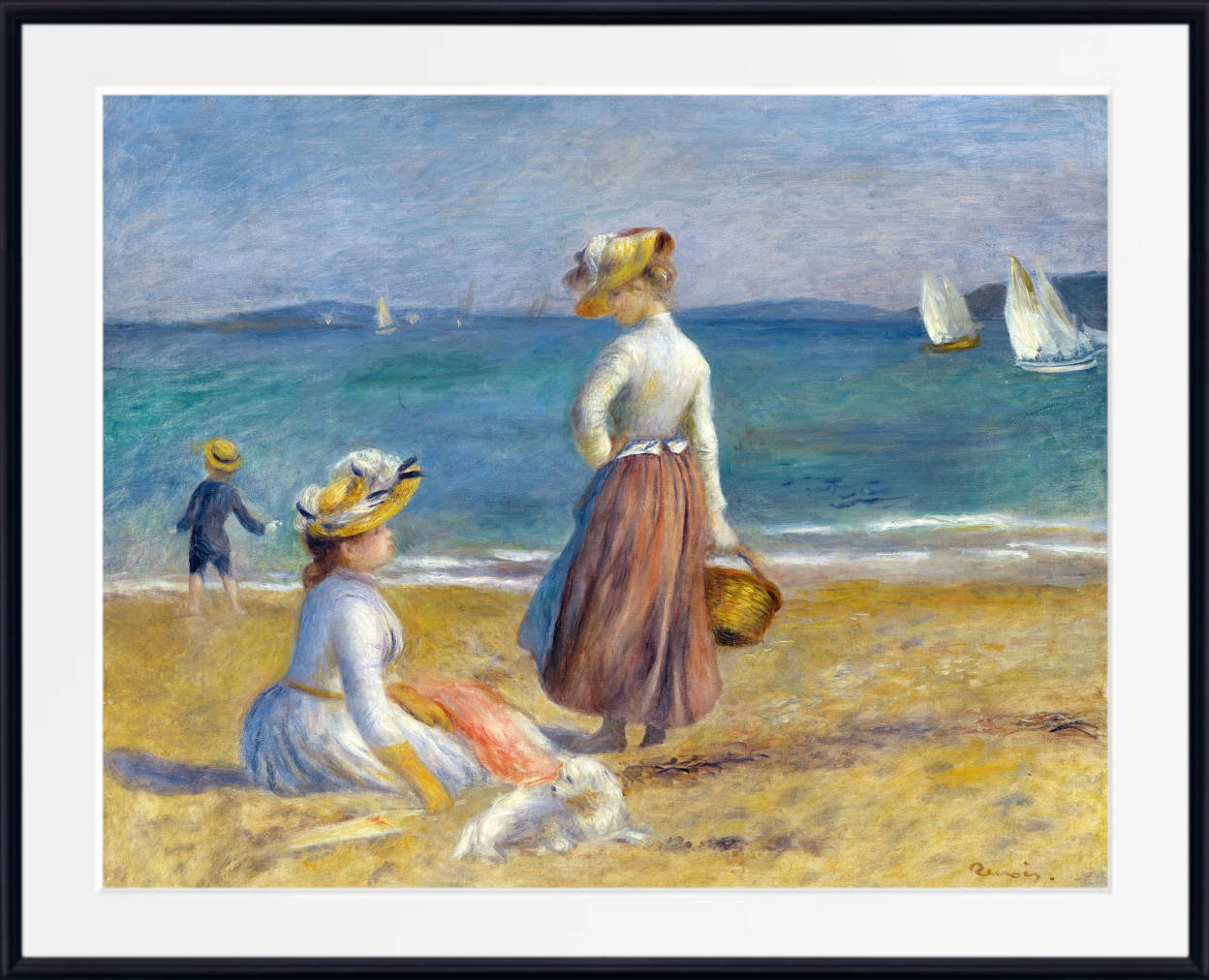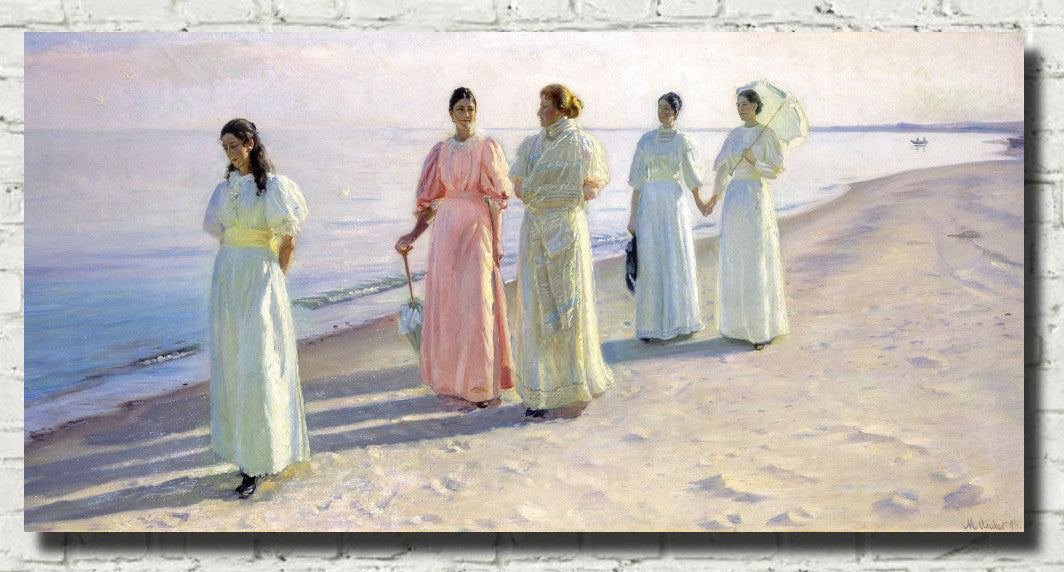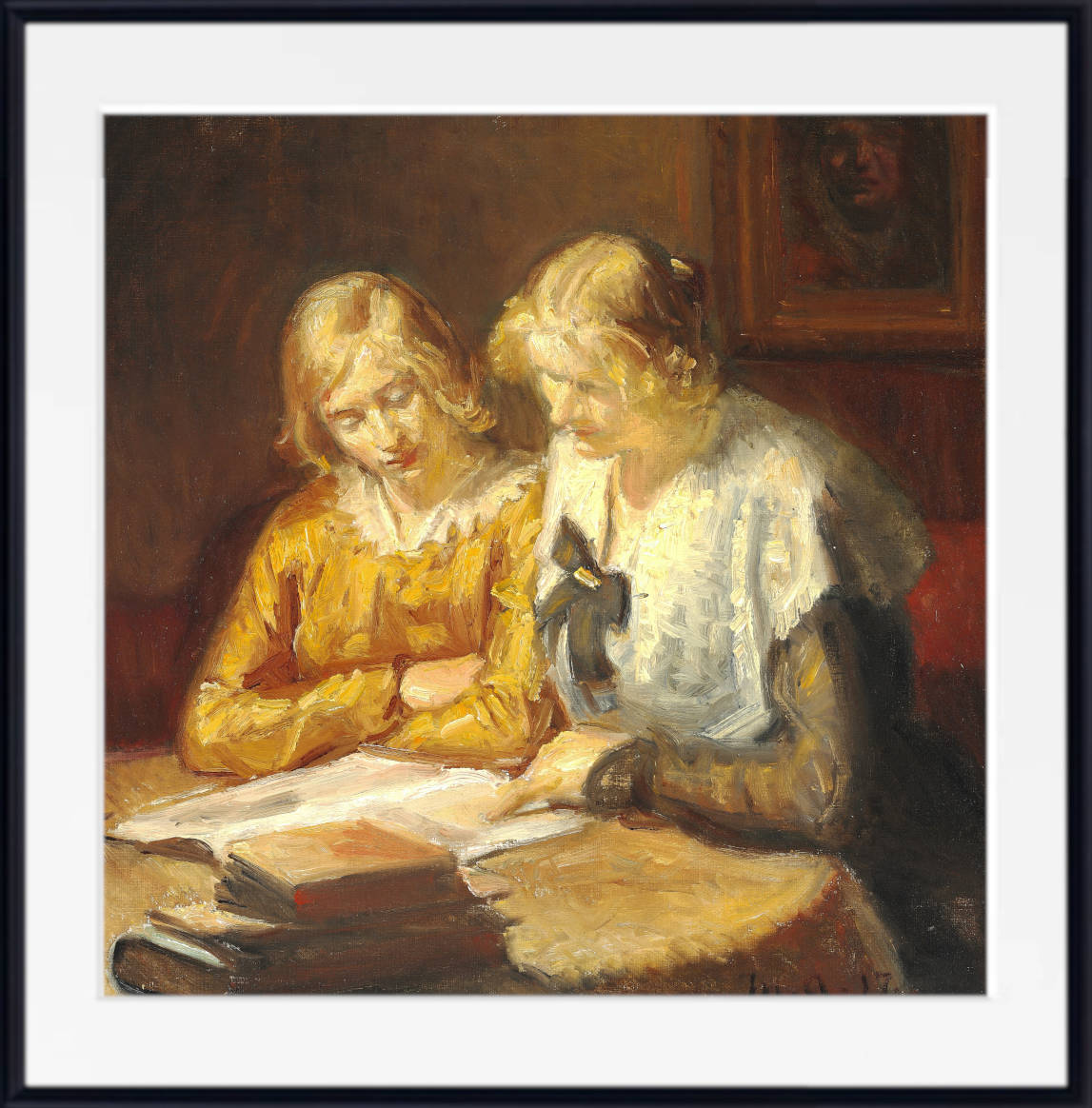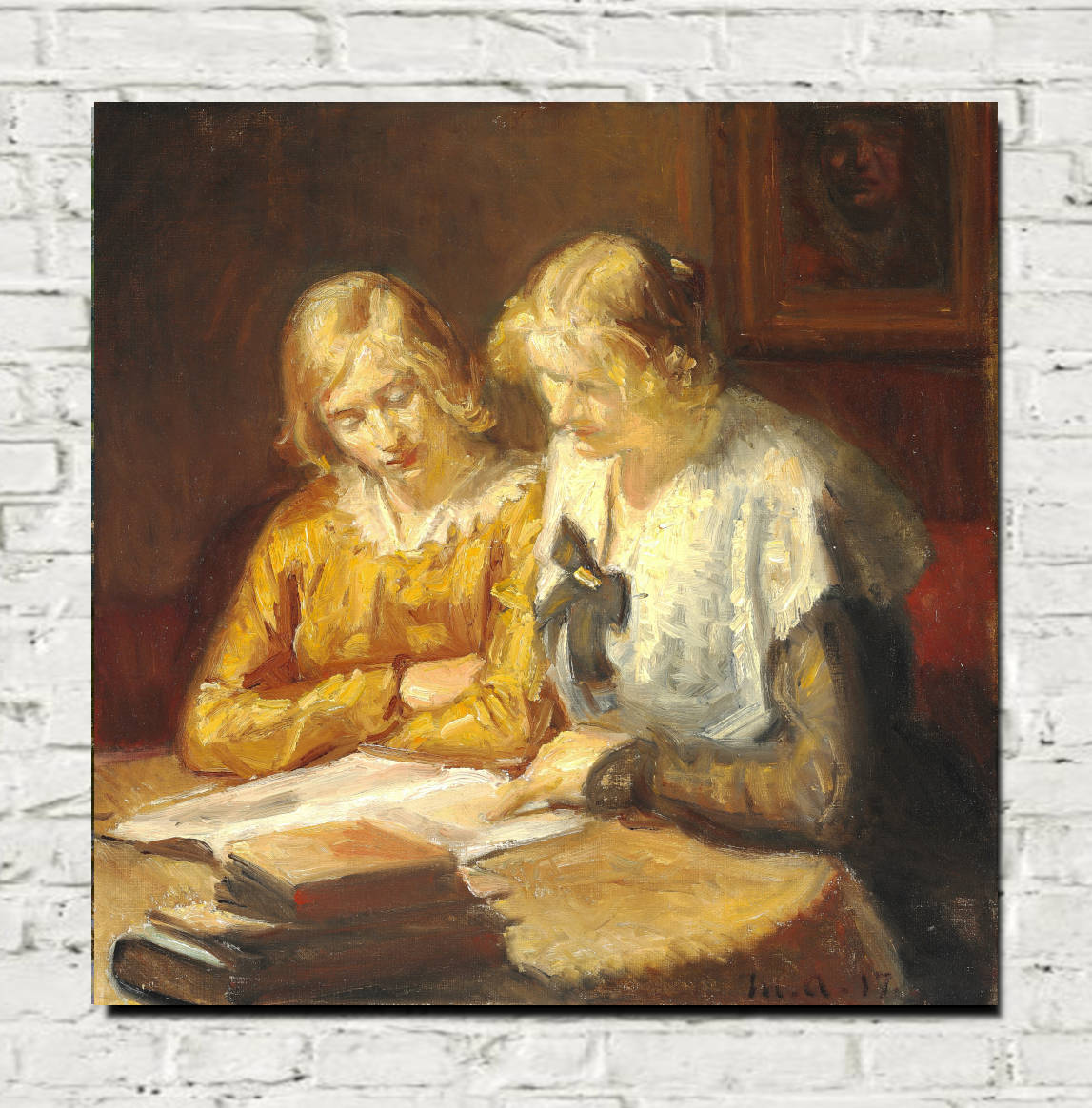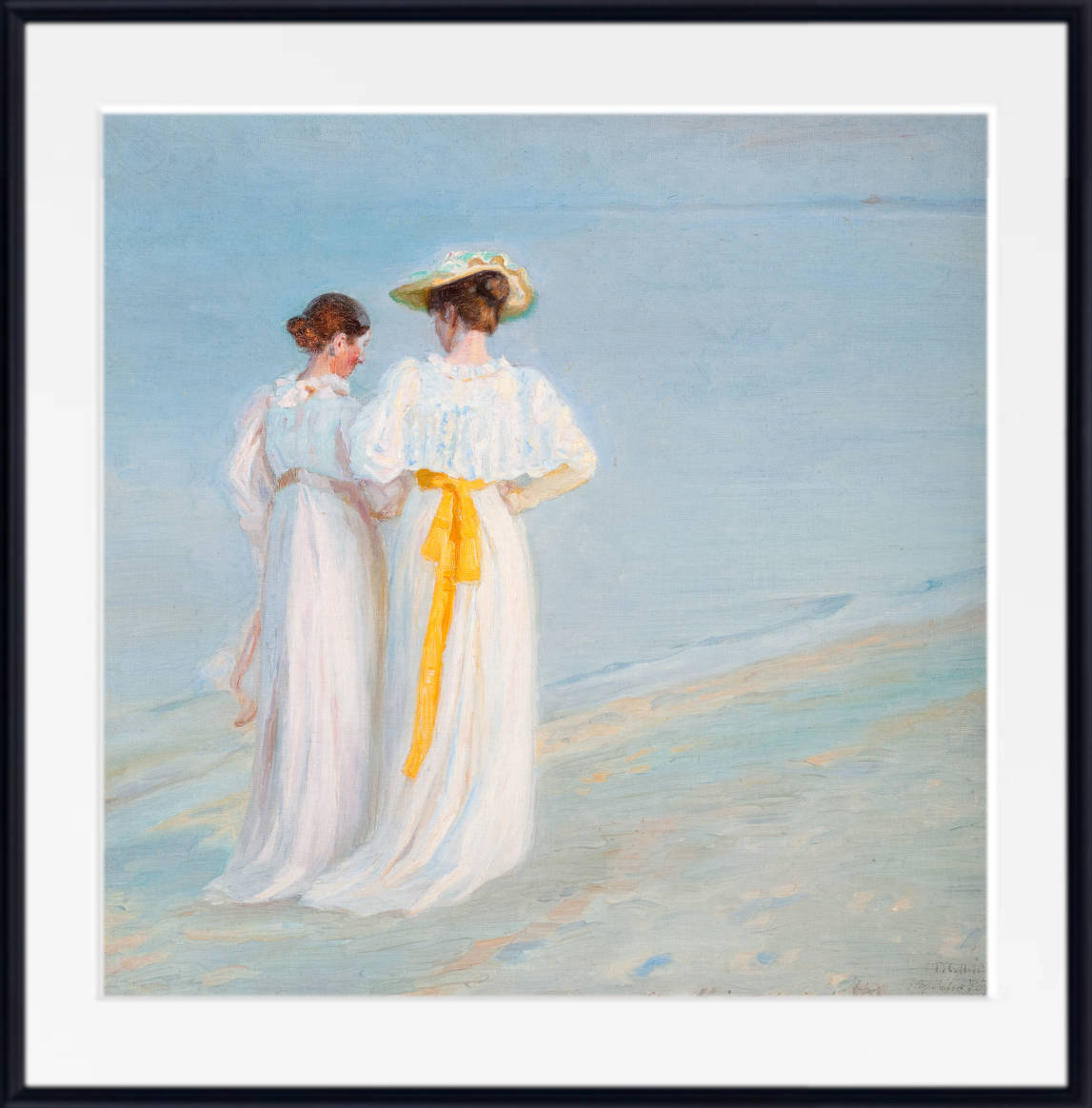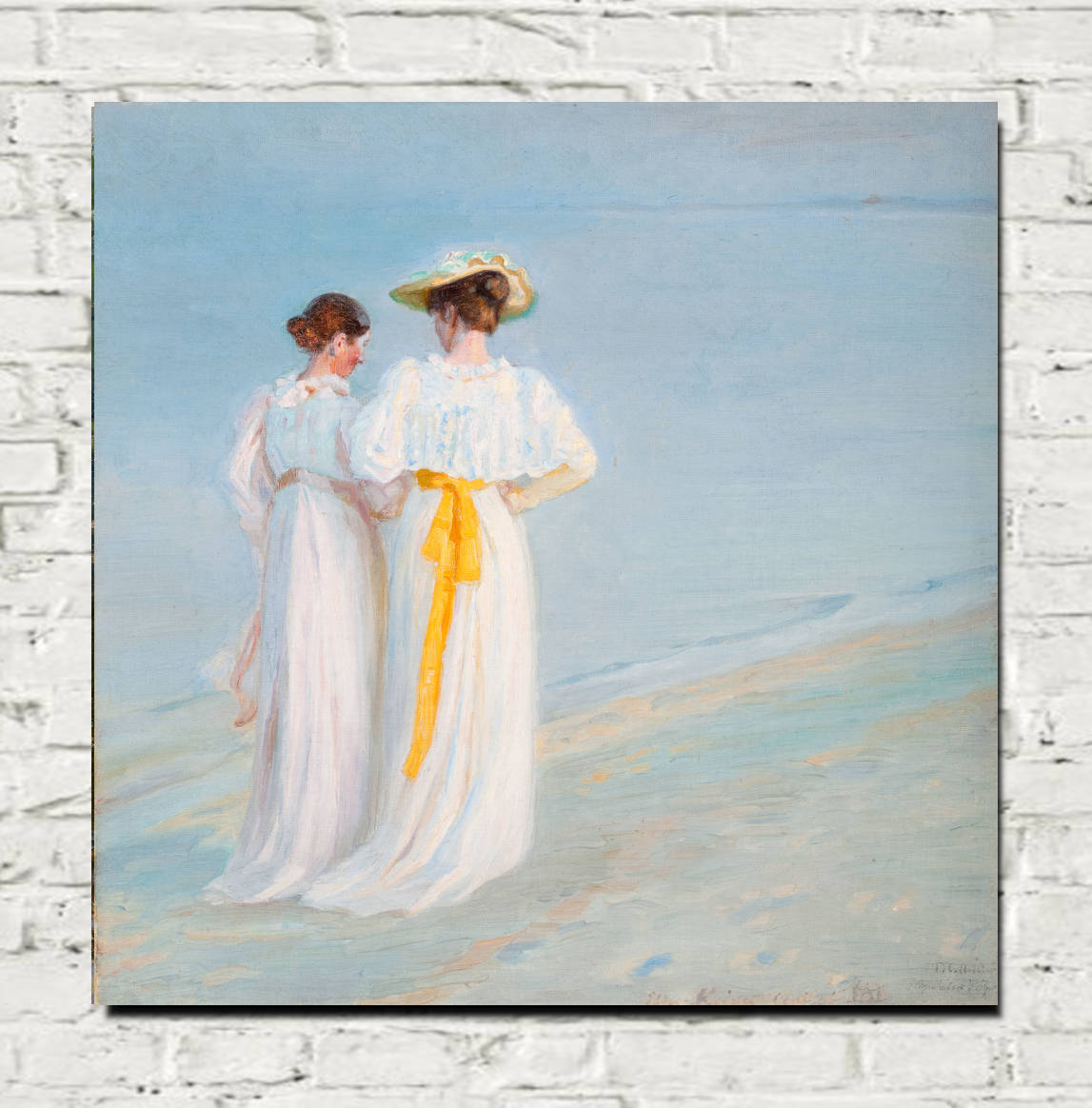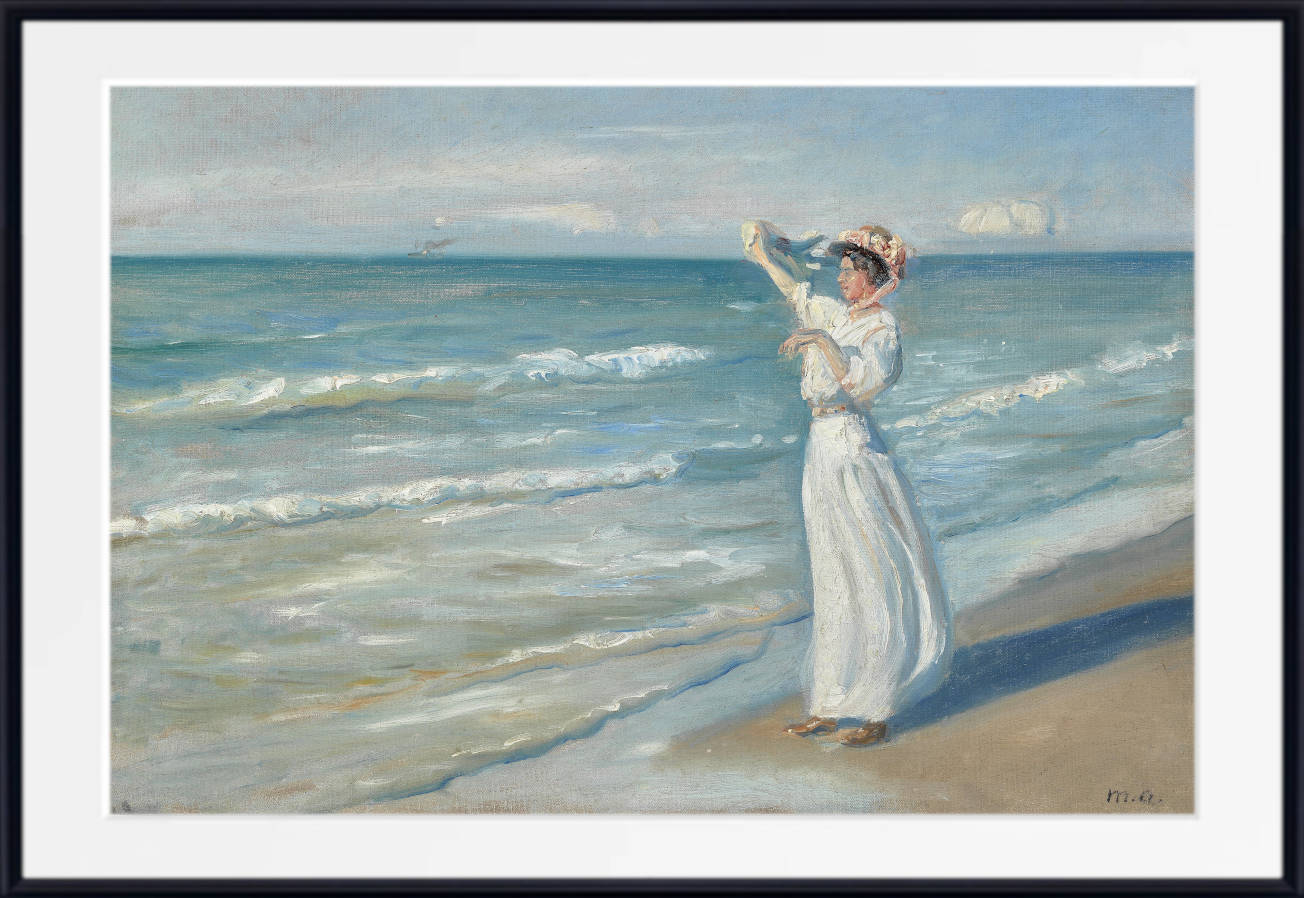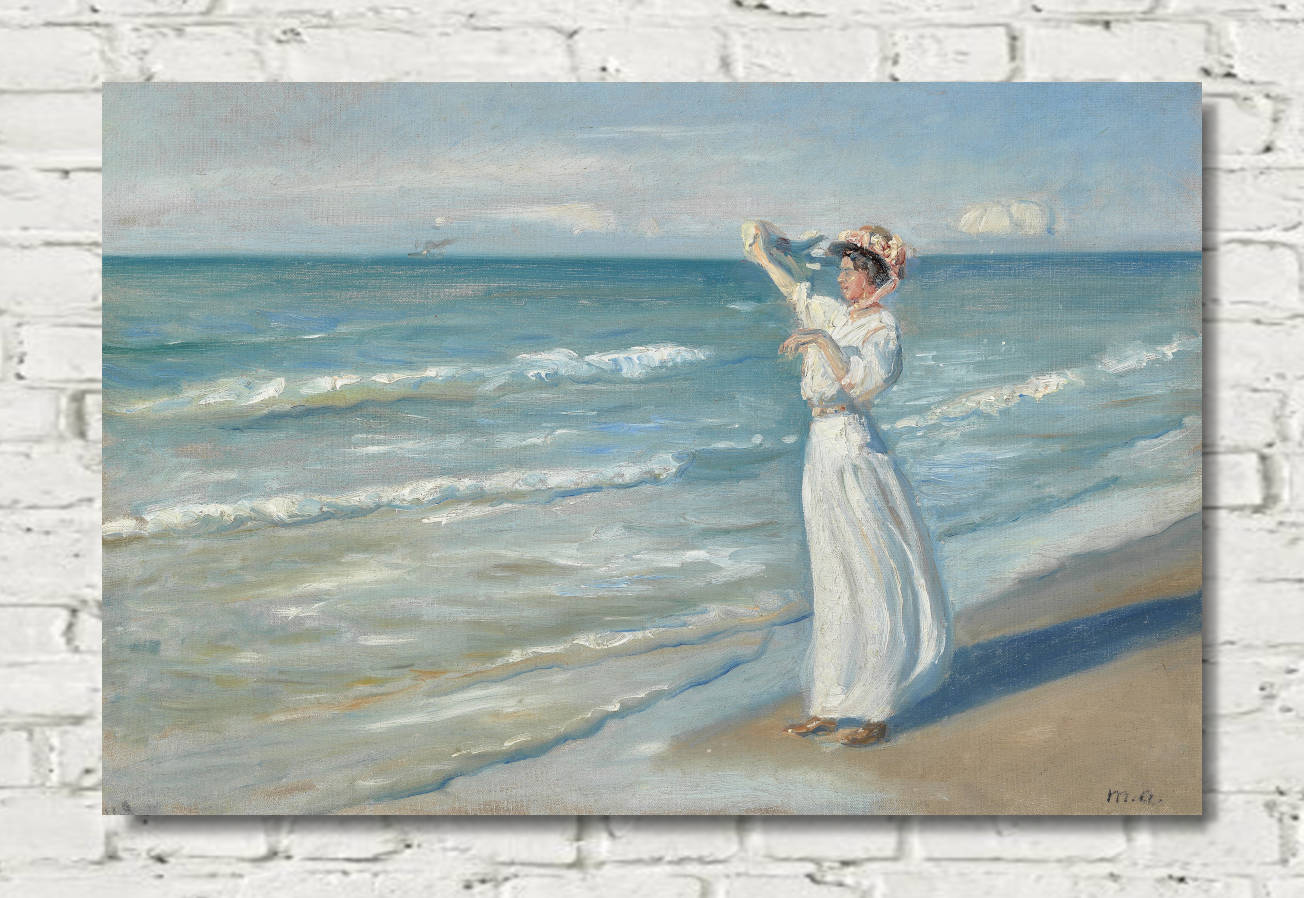John Singer Sargent, Fishing for Oysters at Cancale (1878)
Beach paintings have been popular with artists and their patrons for a very long time. They invariable convey a unique spirit and an intriguing subtext. Most of the really memorable beach scenes were created outdoors, en plain air, a method brought to light by Impressionist artists. In order to fully comprehend nature, its beautiful colors, shapes, and the amazing play of light, this group of painters had taken their easels and canvases outside of the studio perhaps benefitting from the synaesthesia of the sound of the ocean waves and the smell of the salt air.
Our Favourite Beach Scene Painters
Joaquín Sorolla (1863-1923)
Joaquín Sorolla was a Spanish painter, born in Valencia, who excelled in the painting of portraits, landscapes, and monumental works of social and historical themes. His most typical works are characterized by a dexterous representation of the people and landscape under the sunlight of his native land.
Sorolla’s great love was for his home city of Valencia. Despite living in Madrid, he returned to Valencia every year, drawn to the intense light and broad horizon of the coast. He grew a reputation for beach scenes, which he painted endlessly, and had an uncanny ability for capturing the effects of blazing Mediterranean sunlight. Many of these pictures, often large canvases, were executed 'en plein air', as evidenced by the grains of sand embedded in their densely painted surfaces.

Time for a Bathe, Valencia (1909)

Under the Awning, Zarautz (1910)
Paul Gustav Fischer (1860-1934)
Fischer (1860-1934) studied at the Royal Danish Academy of Art in Copenhagen, and apart from his travels abroad lived in that city. He was an artist with an enormous range of subject matter, landscapes, portraits, beach scenes and nudes, both in oil and watercolour, but it is as a painter of street scenes, particularly his prolific portrayals of the everyday street life in Copenhagen, that he is perhaps best remembered.
Fischer was a widely travelled painter, visiting and working in Tivoli in 1880 and 1901, and travelled extensively in Italy, in 1912 painting in Rapello amongst other areas. 1922 saw Fischer in Naples where he painted a significant number of street scenes and also in San Remo. Fischer also painted in Paris, Norway, and Sweden. He exhibited widely portraits, genre and street scenes and infrequently painted formal and historical subjects.
The calm beaches of Denmark captured the artist’s imagination and provided a juxtaposition to his crowded depictions of Copenhagen and the merriments of metropolitan city life.

Eugène Boudin, Beach of Trouville (1867)

Eugène Boudin, Lady in White, on the Beach at Trouville (1869)
Boudin PaintingsEugène Boudin (1824-1898)
Boudin was one of the first French landscape painters to paint outdoors and no collection of beach paintings would be complete without Boudin. He was a marine painter, and expert in the rendering of all that goes upon the sea and along its shores. His pastels, summary and economic, garnered the splendid eulogy of Baudelaire; and Corot called him the "king of the skies". Born at Honfleur, Boudin was the son of a harbor pilot, and at age 10 the young boy worked on a steamboat that ran between Le Havre and Honfleur. In 1835 the family moved to Le Havre, where Boudin's father opened a store for stationery and picture frames. Here the young Eugene worked, later opening his own small shop. Boudin's father had thus abandoned seafaring, and his son gave it up too, having no real vocation for it, though he preserved to his last days much of a sailor's character: frankness, accessibility, and open-heartedness.
Dutch 17th-century masters profoundly influenced him, and on meeting the Dutch painter Johan Jongkind, who had already made his mark in French artistic circles, Boudin was advised by his new friend to paint outdoors (en plein air). He also worked with Troyon and Isabey, and in 1859 met Gustave Courbet who introduced him to Charles Baudelaire, the first critic to draw Boudin’s talents to public attention when the artist made his debut at the 1859 Paris Salon. In 1857/58 Boudin befriended the young Claude Monet, then only 18, and persuaded him to give up his teenage caricature drawings and to become a landscape painter, helping to instill in him a love of bright hues and the play of light on water later evident in Monet's Impressionist paintings. The two remained lifelong friends and Monet later paid tribute to Boudin’s early influence.
Boudin is best remembered today for his paintings of crowds of affluent holidaymakers on the beaches of Trouville and Deauville, painted in the 1860s. In his freely painted oil sketches, however, the mood is bleak rather than festive. Dark clouds have gathered in the sky and a torrential downpour seems imminent.
Andi Lucas(1961-)
Andi Lucas is a contemporary landscape, seascape and still life painter. Her distinctive artworks capture the beauty of the world around us inspired by the British coastline, European cities and numerous other locations she has travelled to worldwide.
Her atmospheric, ethereal paintings create soft, intimate moods. Forests, seascapes and beaches are her preferred subjects.

Andi Lucas French Beach Sunset
Andi Lucas PaintingsNature was and will always be an amazing inspiration for artists. The beach, the ocean, and the seashores are amazing sources of color and light - and to the Romantics - those elements re-enforced the change of emotional states. Such ideas are best described in the history of landscape paintings, in particularly abstract landscapes, where nature was reduced to mere symbols. But, when focusing on beach paintings, most artists desired to reflect on the shimmering light, the adored past-times, and to exemplify the ideas of eternity and warmth.
With memories of past vacations and hopes for future seaside holidays, beach scenes will always be a popular choice for home decor.

